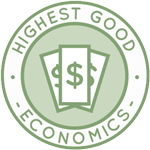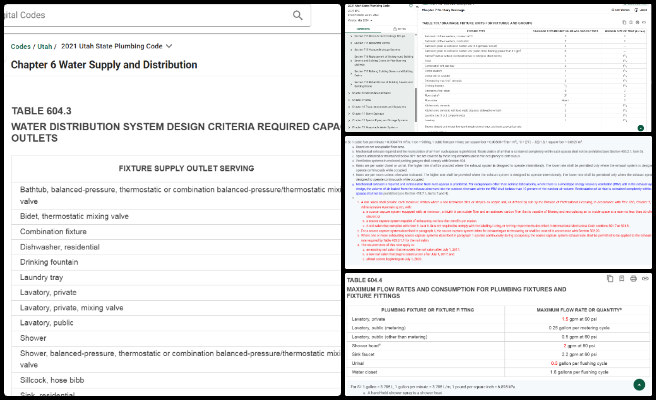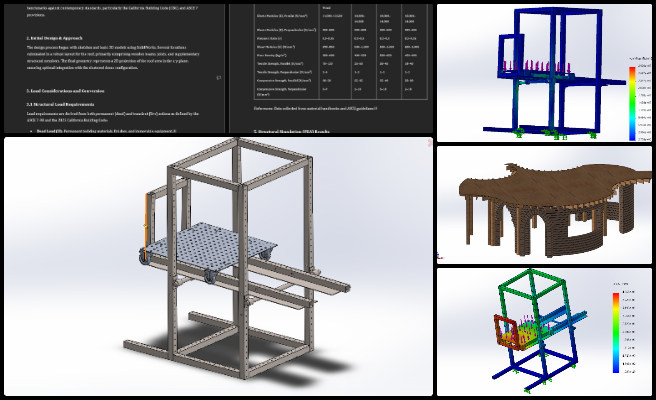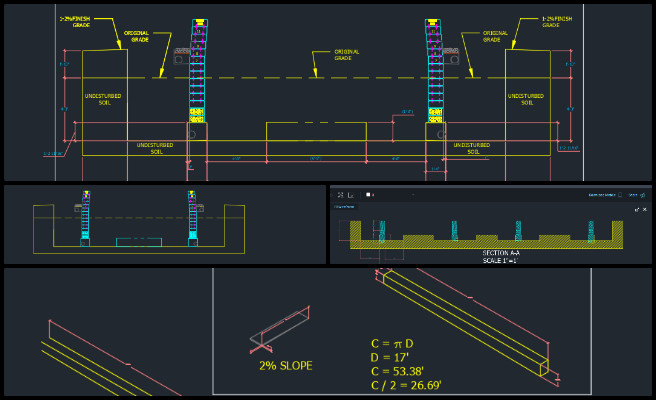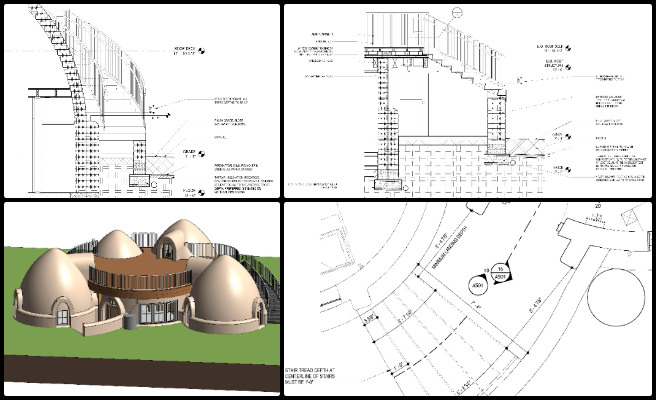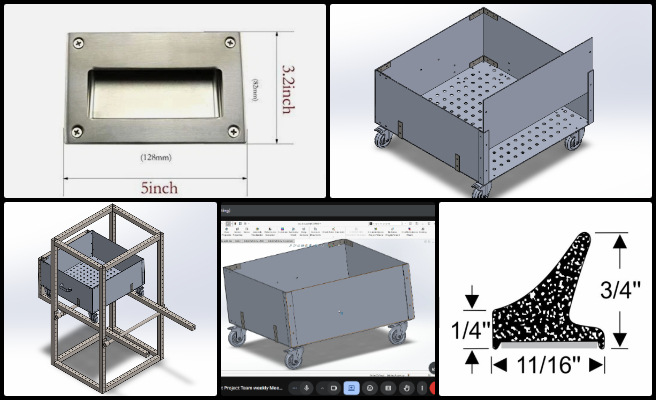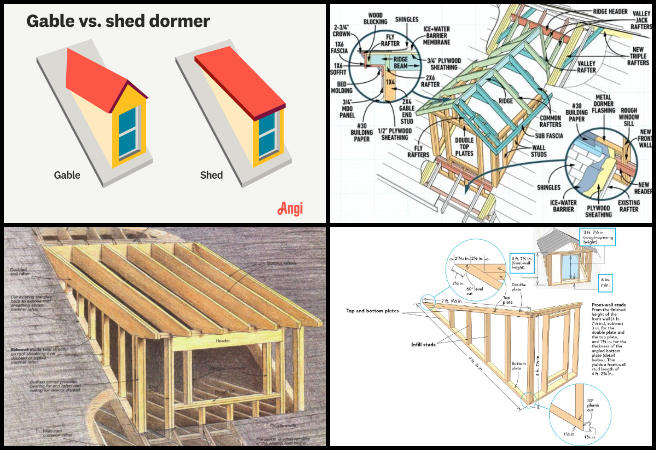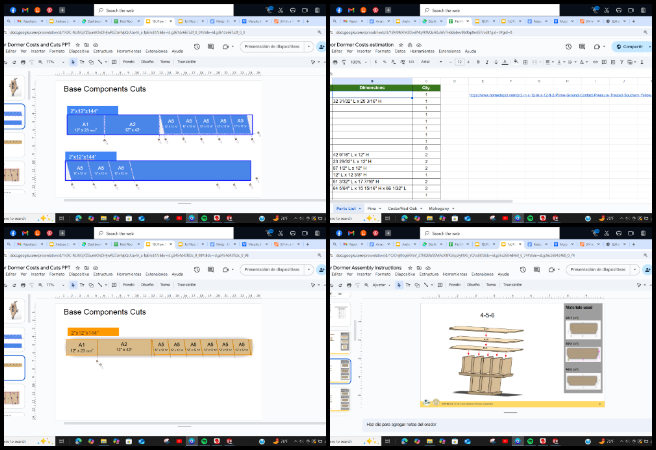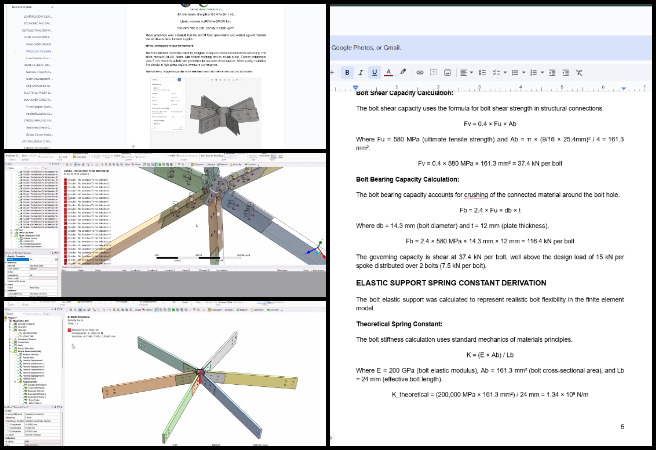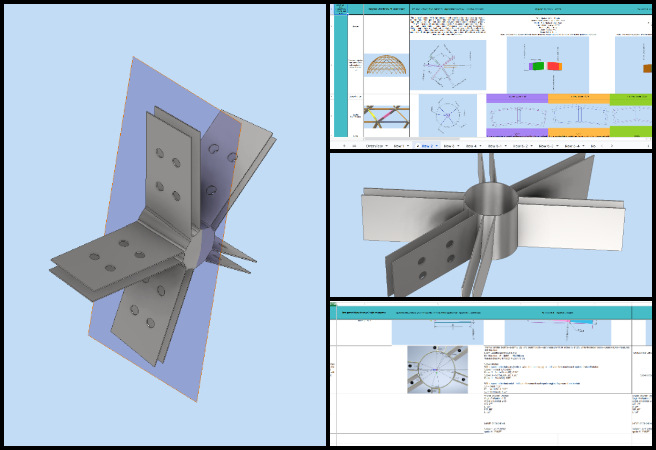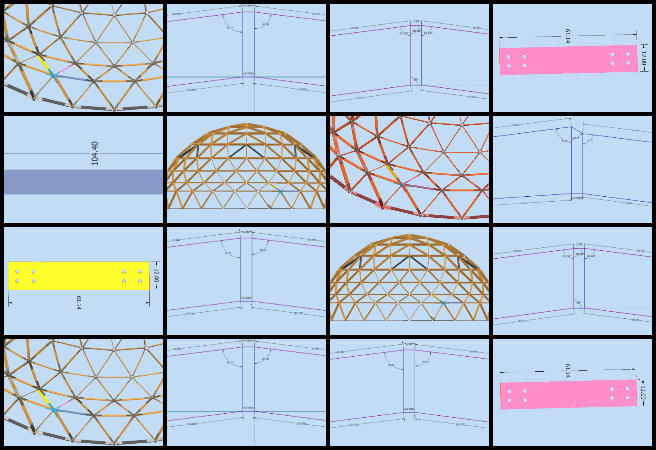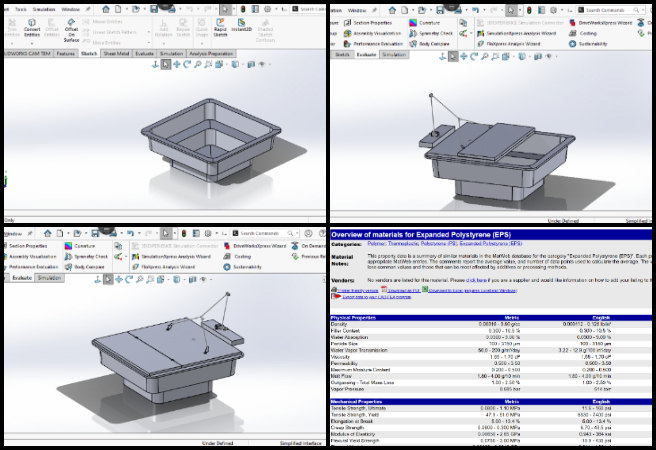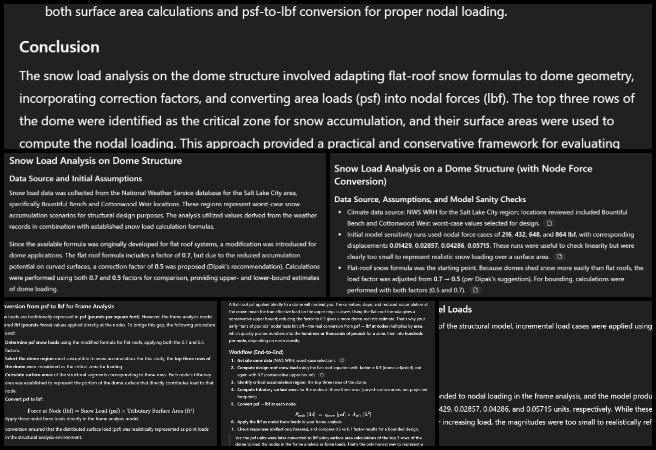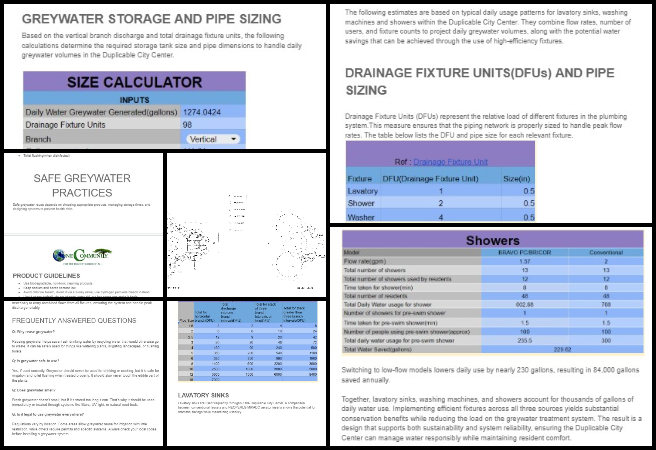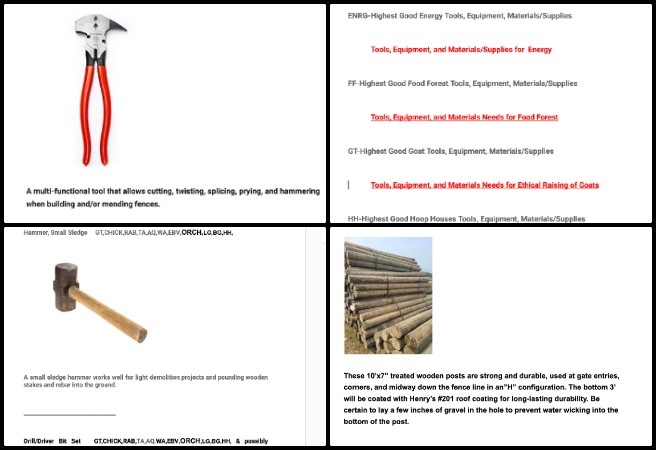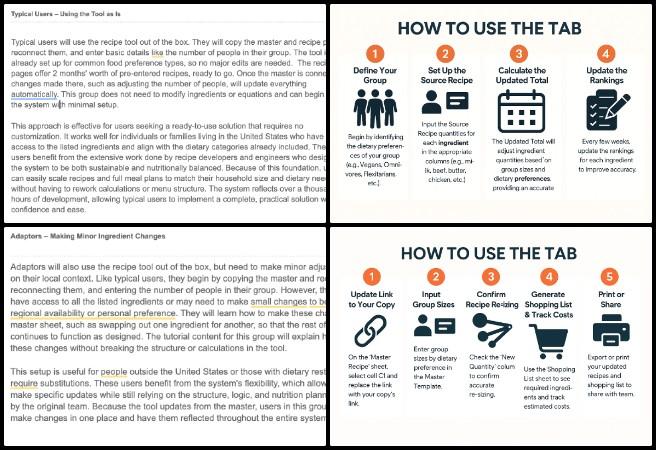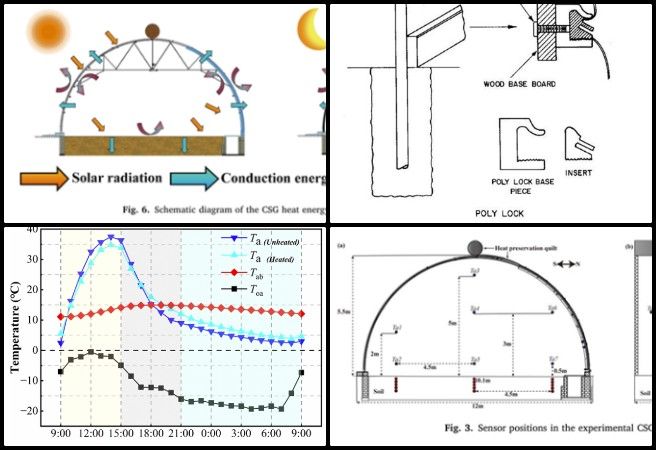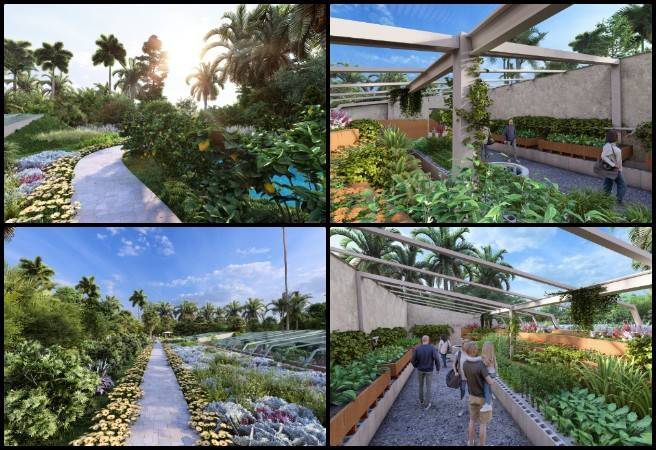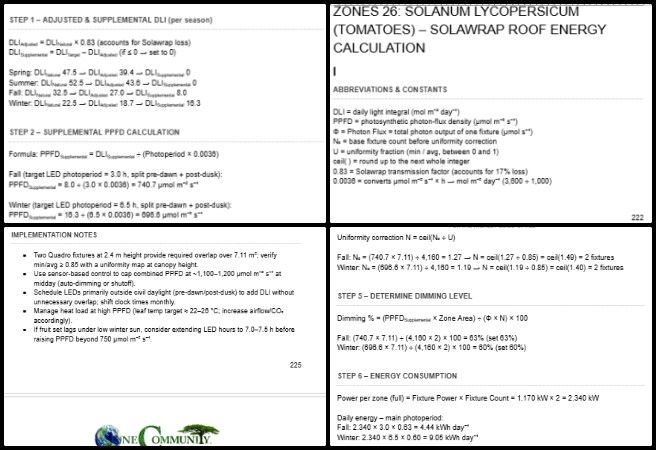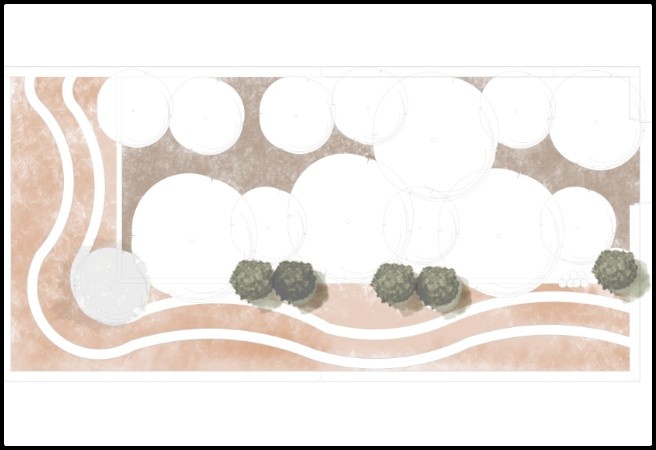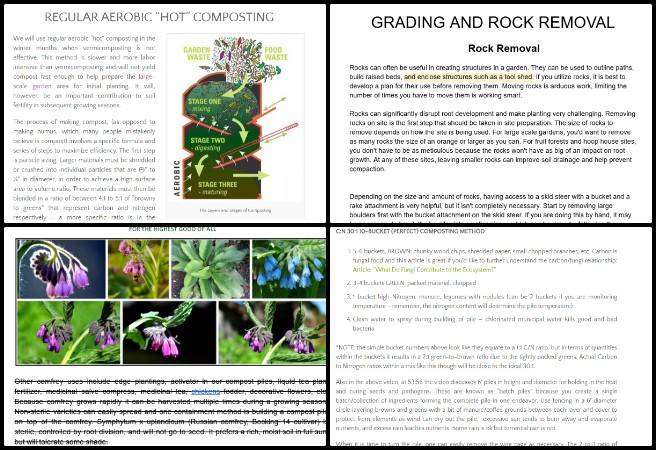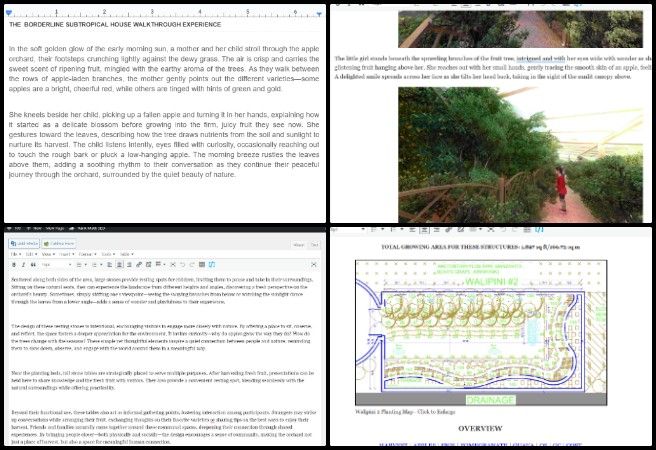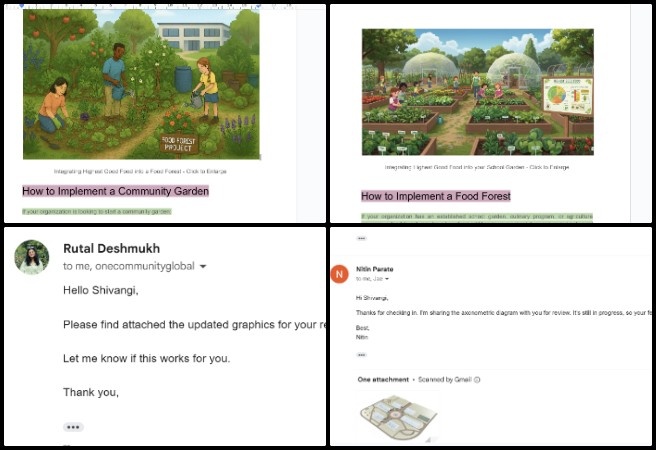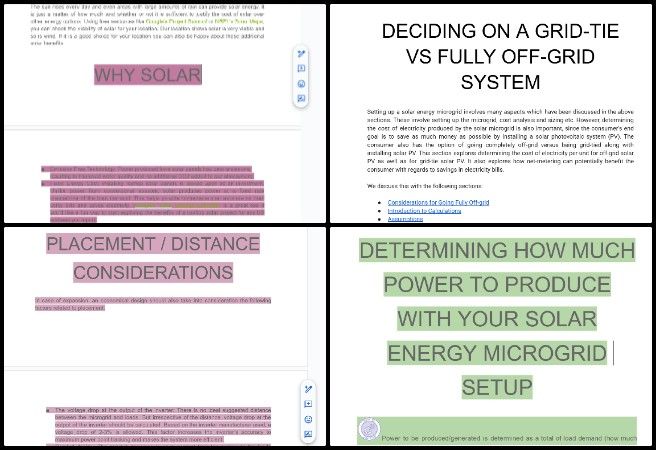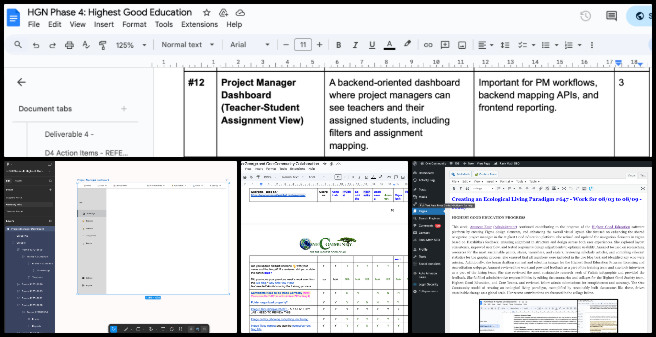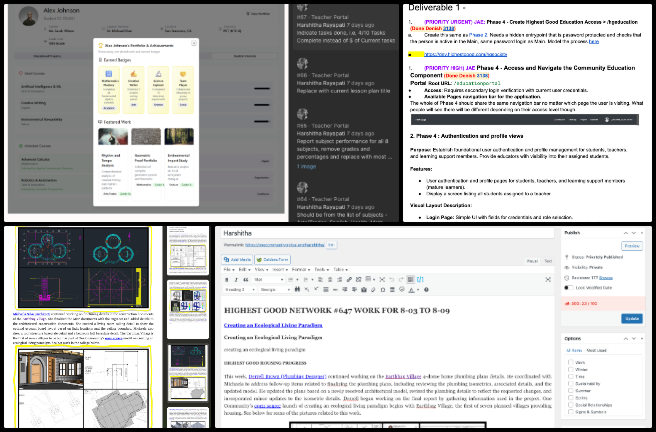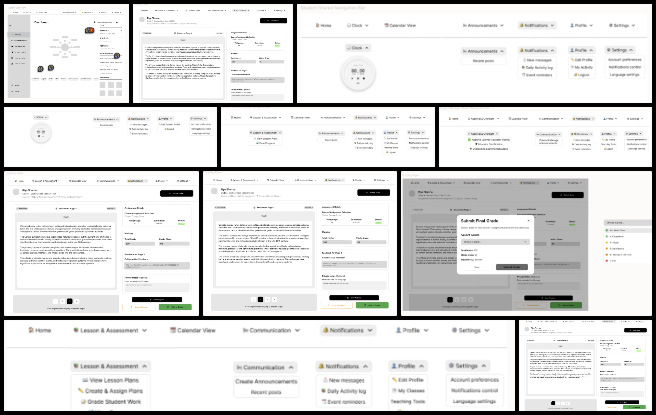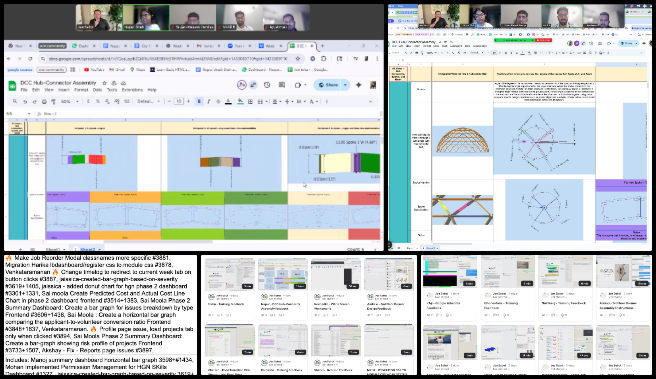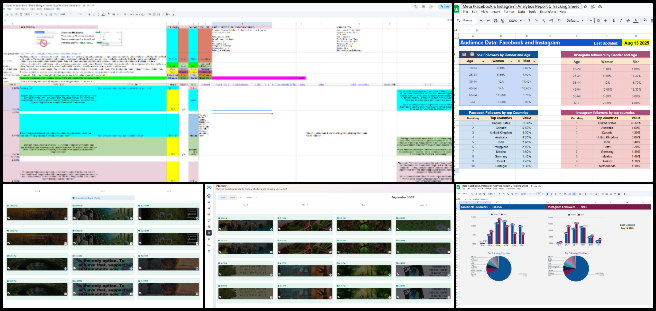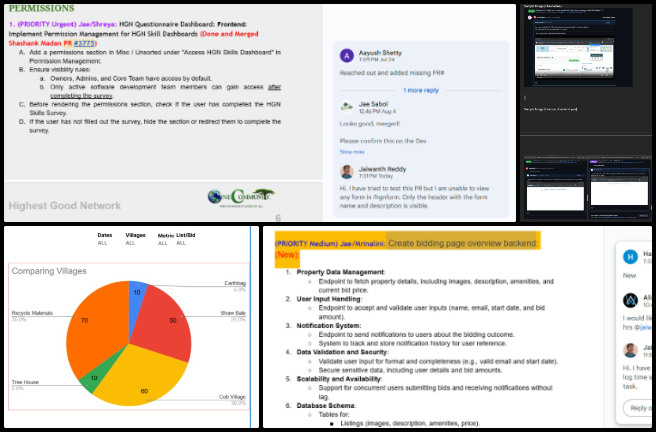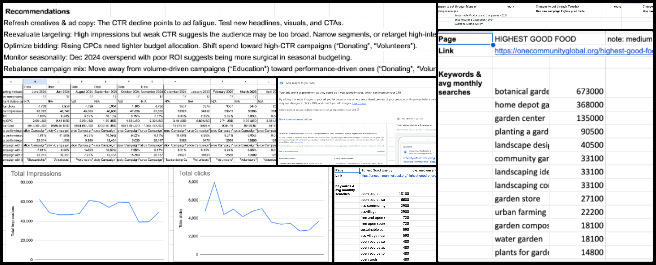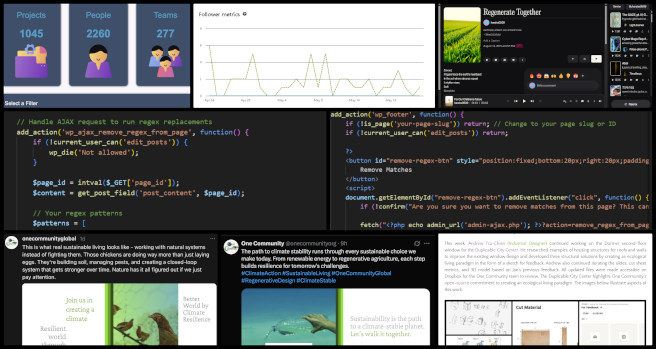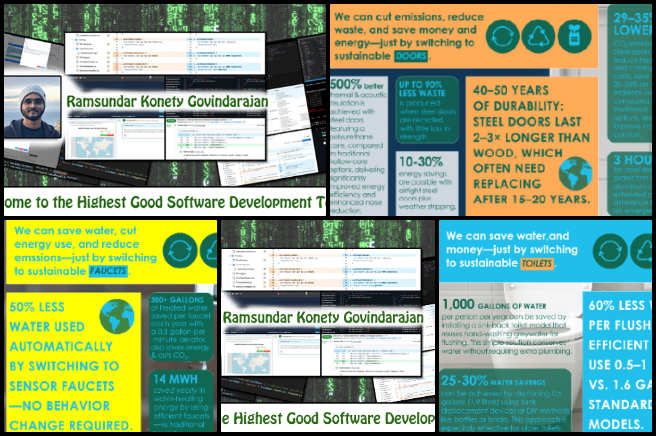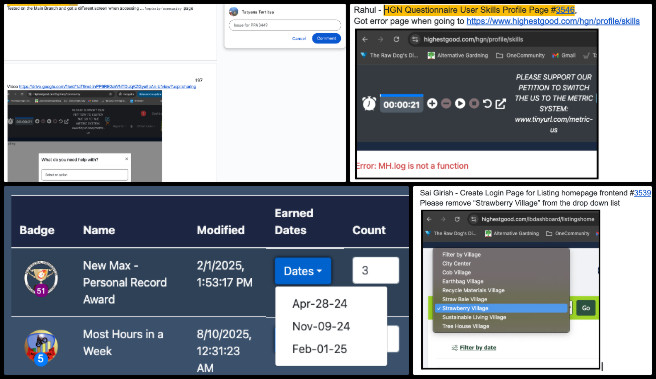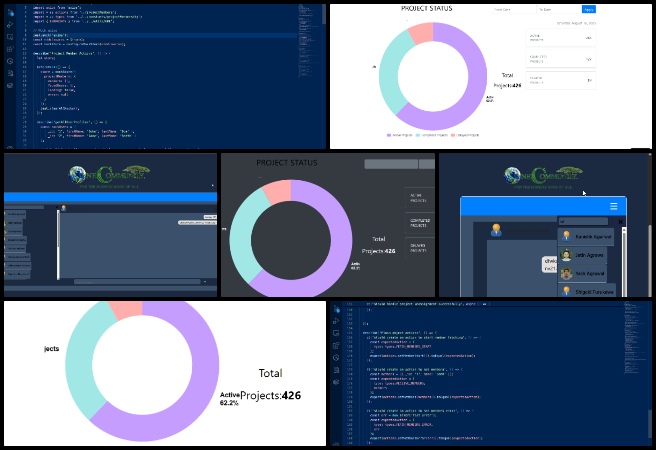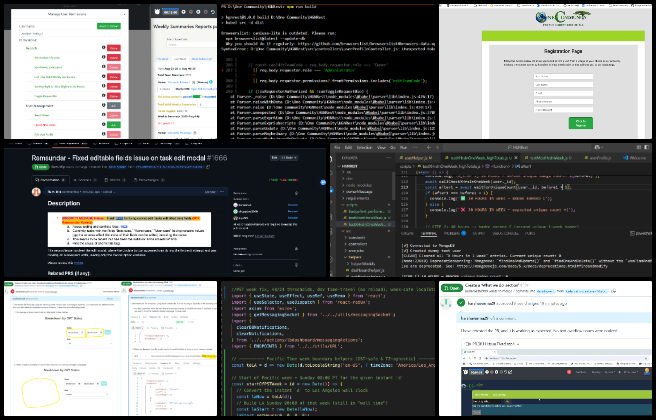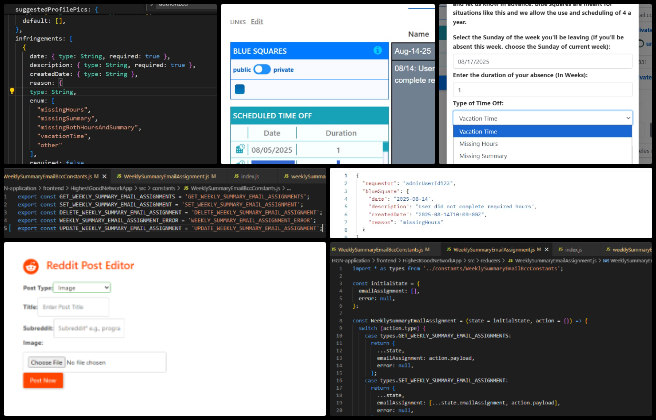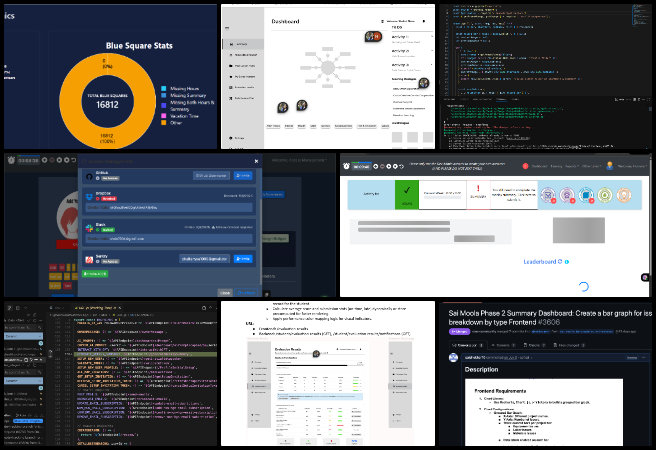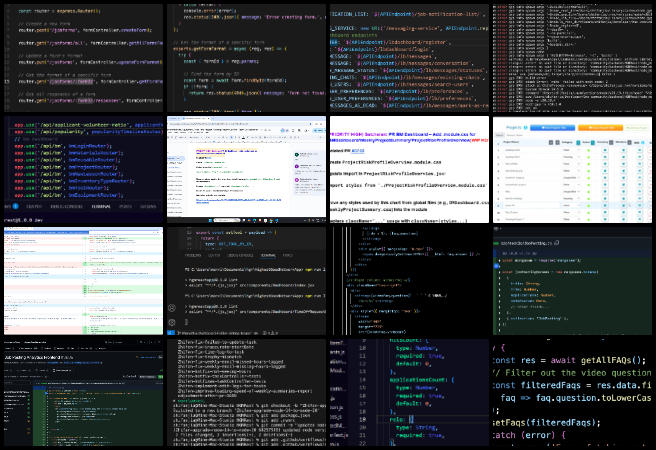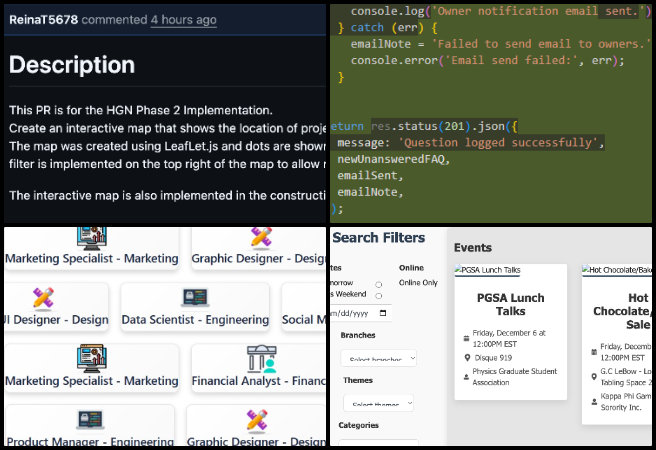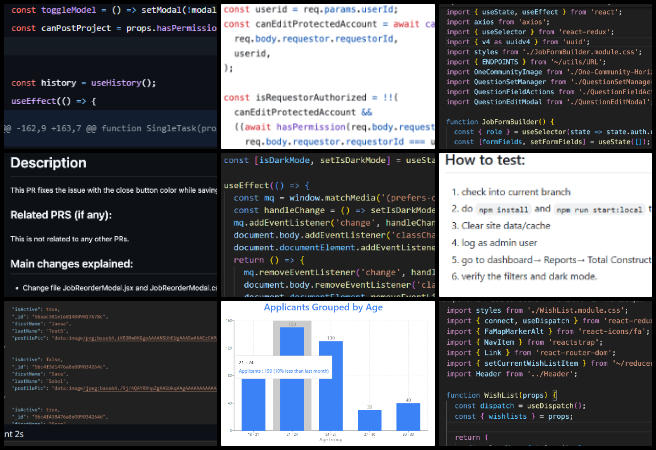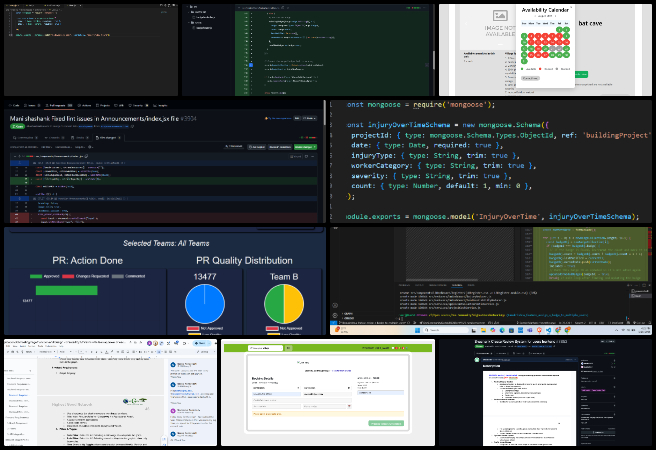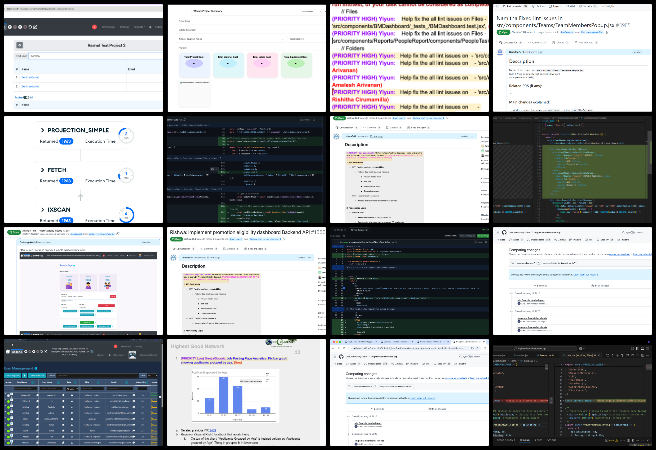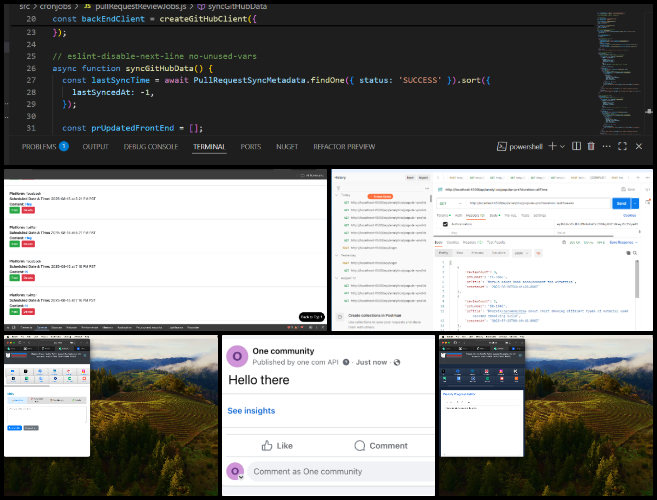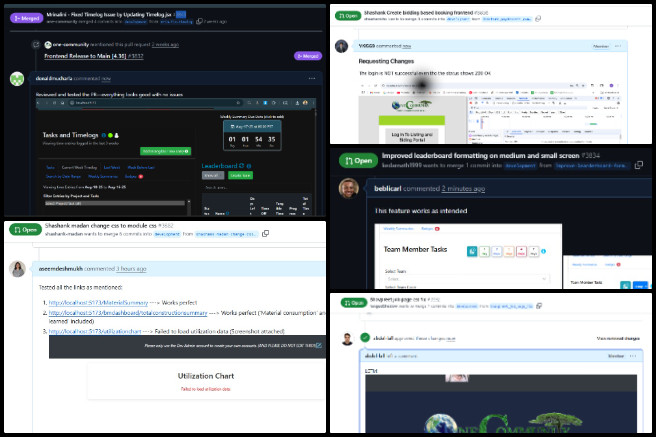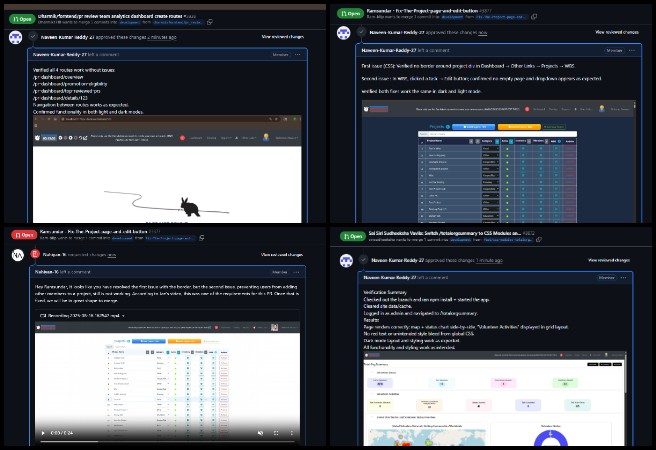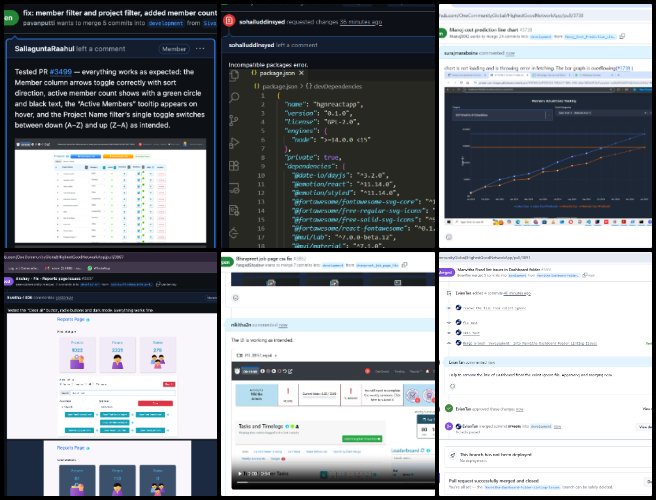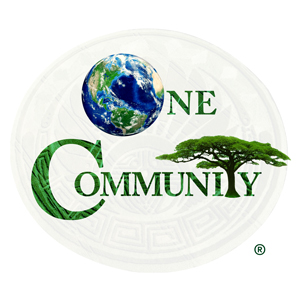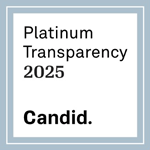How to Create Global Sustainability – One Community Weekly Progress Update #648
At One Community, we are demonstrating how to create global sustainability by open sourcing and free sharing the complete process for sustainable approaches to food, energy, housing, education, economics, social architecture, and more. Created by an all-volunteer team, our work is designed to be self-replicating and support a global collaboration of teacher/demonstration hubs. Everything we do is for The Highest Good of All, with the goal of evolving sustainability, regenerating our planet, and creating a world that works for everyone.
- Here’s our project overview
- Here’s our world-change methodology
- Here’s how this becomes self-replicating
- Here’s how we are open source and free-sharing all the do-it-yourself designs
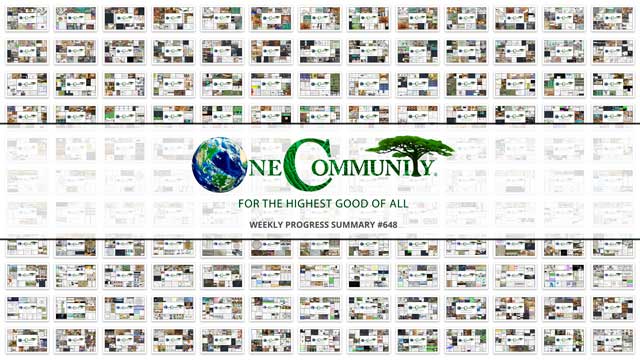
OUR MAIN OPEN SOURCE HUBS
Click on each icon to be taken to the corresponding Highest Good hub page.
One Community’s physical location will forward this movement as the first of many self-replicating teacher/demonstration communities, villages, and cities to be built around the world. This is the August 18, 2025 edition (#648) of our weekly progress update detailing our team’s development and accomplishments:
How to Create Global Sustainability
One Community Progress Update #648
DONATE | COLLABORATE | HELP WITH LARGE-SCALE FUNDING
CLICK HERE IF YOU’D LIKE TO RECEIVE AN EMAIL EACH WEEK WHEN WE RELEASE A NEW UPDATE
YOU CAN ALSO JOIN US THROUGH SOCIAL MEDIA
ONE COMMUNITY WEEKLY UPDATE DETAILS
HIGHEST GOOD HOUSING PROGRESS
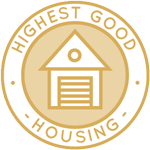 One Community is demonstrating how to create global sustainability through Highest Good housing that is artistic and beautiful, more affordable, more space efficient, lasts longer, DIY buildable, and constructed with healthy and sustainable materials:
One Community is demonstrating how to create global sustainability through Highest Good housing that is artistic and beautiful, more affordable, more space efficient, lasts longer, DIY buildable, and constructed with healthy and sustainable materials:
- Learn about: Our Upcoming Crowdfunding Campaign
- Learn about the different village models: 7 Sustainable Village Models
- Visit the open source portals for the first two: Earthbag Village OS Hub | Straw Bale Village OS Hub
HIGHEST GOOD HOUSING PROGRESS
This week, Derrell Brown (Plumbing Designer) continued working on the Earthbag Village 4-dome home plumbing plan details. He coordinated with Michaela to further organize and gather initial information from the design project for inclusion in the final report. He researched the International Mechanical Code and International Plumbing Code to reference sizing methods and applicable code requirements. One Community’s open source launch on how to create global sustainability begins with Earthbag Village, the first of seven planned villages providing housing. See below for some of the pictures related to this work.
Karthik Pillai (Mechanical Engineer) continued working on the Vermiculture Toilet project, focusing on preparing reports and supporting new team members’ integration. He collaborated with Rahul and Adil to identify the next steps for development, reviewing how the drawer should be modified to meet requirements for the waste dumping assembly. This work involved evaluating design adjustments and progressing with finite element analysis to assess the impact of the proposed changes. In parallel, for the Earthbag Village 4-dome cluster project, following confirmation through FEA that the design complies with California building codes, he worked on updating the project report to incorporate the most recent analysis results and ensure all relevant design data is accurately reflected. As the first of seven planned villages, the Earthbag Village provides the initial housing within One Community’s open source designs on how to create global sustainability. See the work in the collage below.
Ketsia Kayembe (Civil Engineer) continued working on the three domes of the Earthbag Village and prepared the excavation foundation drawings. She referred to the construction template and related sources to edit the drawings according to project standards. Her tasks included renaming and organizing the drawing files, checking and adjusting dimensions, and ensuring that the necessary information was included for construction purposes. Ketsia also reorganized elements within the drawings to align with the required structure and verified that all layers and labels were properly applied. One Community’s open source framework on how to create global sustainability begins with Earthbag Village, the first of seven planned villages providing housing. See below for some of the pictures related to this work.
Michaela Silva (Architect) continued working on details in the construction documents of the Earthbag Village. She progressed the exterior details by modeling the roof fascia boards to close off the roof edge, requiring two vertical rows to cover the full roof height. She created exterior roof stair sections with one cut parallel to the treads and another cut perpendicular to the treads, and developed a plan to dimension and detail the front entry stair. The Earthbag Village is the first of seven villages to be built as part of One Community’s open source model on how to create global sustainability. See her work in the collage below.
Rahul Kulkarni (Mechanical Engineer) continued working on the Vermiculture Toilet drawer design modifications. This included the creation of a CAD outline in SolidWorks for the proposed changes. He researched parts that could be attached to the drawer for waste extraction, and shelf handles were integrated into the redesign. Additional research focused on V-profile rubber seals for the drawer modifications. A design concept was attempted in which the back panel of the drawer could slide upward using a handle to allow waste to be dumped out, with a rubber seal attached to the bottom edge to reduce leakage. The Earthbag Village, the first of seven planned villages, serves as the initial housing component within One Community’s open source model on how to create global sustainability. See below for some of the pictures related to this work.
DUPLICABLE CITY CENTER PROGRESS
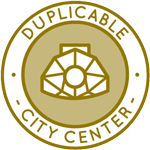 One Community is demonstrating how to create global sustainability through a Duplicable and Sustainable City Center that is LEED Platinum certified/Sustainable, can feed 200 people at a time, provide laundry for over 300 people, is beautiful, spacious, and saves resources, money, and space:
One Community is demonstrating how to create global sustainability through a Duplicable and Sustainable City Center that is LEED Platinum certified/Sustainable, can feed 200 people at a time, provide laundry for over 300 people, is beautiful, spacious, and saves resources, money, and space:
- Learn about this building and it’s function: Duplicable City Center Open Source Hub
This week, Andrew Tzu-Chien (Industrial Designer) continued working on the Dormer second-floor window for the Duplicable City Center. He reviewed Jae’s feedback and carefully went through Ariana’s work, providing feedback where needed. Following this, he began making adjustments to the assembly instruction slides. Andrew also carried out additional research on window structures and safety codes to identify better solutions for the window design. Based on this research, he sketched new ideas and created CAD models to test the concepts. The Duplicable City Center highlights One Community’s open-source commitment to how to create global sustainability. The images below illustrate aspects of this work.
Ariana Virginia Gutierrez Doria Medina (Industrial Designer) continued the analysis and cost estimation of the windows for the Duplicable City Center. She focused on redrawing, cutting, and cost estimation. The redrawing was done to redesign certain parts in order to eliminate glued sections, simplify angles, and reduce the number of cuts. In addition, a detailed shopping list was carefully created to support a more accurate estimation of overall costs. Explore how to create global sustainability in One Community’s open-source Duplicable City Center empowers people to learn. Browse the visuals below.
Ayushman Dutta (Mechanical Engineer) continued working on reviewing pipe materials for the Duplicable City Center hub connector design. He worked on FEA model preparation, focusing on making connections within the model to ensure proper setup. Although he encountered difficulties, he cleared the errors and continued developing the analysis. Ayushman attended the weekly meeting, where he discussed bottlenecks in the task and worked on action items for the week. He finished the FEA analysis with correct contacts and boundary conditions, ensuring the model was properly configured for accurate results. Ayushman also worked on formatting the report according to the provided template, organizing his findings, and analyzing results in the required documentation format for the project deliverables. This open-source Duplicable City Center project demonstrates how to create global sustainability through thoughtful design. For more specifics, view the image below.
Nikhil Bharadwaj (Mechanical Engineer) continued working on creating the spoke designs for the Duplicable City Center hub connector. He reviewed Jae’s feedback on the assembly instructions for row 2 and made the required corrections. Nikhil connected with Koushik to help clarify the modeling task for cutting beams to fit the modified row 2 hub connector in the dome assembly. He completed the hub and spoke design for row 3 using the 10.7-inch central hub and shared the design with Nupur and Ayushman to support downstream activities. Nikhil also evaluated all hub connector design variations for row 5 and set up the assembly spreadsheet. One Community’s Duplicable City Center is an example of how to create global sustainability. Here are a few pictures that showcase this work.
Nupur Shah (Mechanical Engineer) continued work on Row 2 of the Duplicable City Center hub connector. She worked on preparing the overview sheet to organize the information needed for the full dome and ensure it was ready for reference across all rows. The Row 2 hub connector was completed, including final updates to the related files and details, and attention then shifted toward beginning work on the Row 3 hub connector. The focus was on maintaining consistency between the assemblies and ensuring the documentation reflected the updated design requirements for both the overview and the individual components. One Community’s Duplicable City Center serves as an open-source example of how to create global sustainability. Here are a few pictures that showcase this work.
Sandesh Kumawat (Mechanical Engineer) continued working on the City Center Natural Pool and Eco-spa Designs. He designed a new spa tub model for Duplicable City Center and focused on preparing the thermal analysis for the spa cover and pool. He reviewed the 2022 reports to understand the prior setup and extracted the key inputs needed for ANSYS: material properties for foam and skins, densities and specific heats for transient cases, emissivity for radiation, and convection coefficients for still and light-wind conditions. Sandesh noted contact conductance values to represent seams and latches and outlined baseline and comparison cases for computing heat loss, U-value, R-value, and heat-flux maps. In parallel, he completed a redesign to maximize the spa pool dimensions within the existing footprint and adjusted the cover plate sizes and hinge positions to maintain full coverage with overlap. He organized the model regions so the ANSYS setup can start next. Discover how to create global sustainability through One Community’s open-source Duplicable City Center. The following visuals illustrate highlights from this effort.
Srujan Pandya (Mechanical Engineer) continued helping with the Duplicable City Center FEA analysis. He verified the “Shu’s” snow load results, ensuring the accuracy of the dome model, and noticed the discrepancy in the snow load calculations. He revised the Snow Load write-up to include detailed surface area conversions from psf to lbf for accurate model setup. Additionally, Srujan organized project folders by archiving Versions 0, 1, and 2, and creating a latest version folder containing all current files, including the new snow load analysis. The Duplicable City Center demonstrates how to create global sustainability through open-source design that can guide people. The images below illustrate aspects of this work.
Vineela Reddy Pippera Badguna (Mechanical Engineer) continued conducting in-depth research on greywater reuse systems for the Duplicable City Center. She updated the AutoCAD files to include the routing for greywater pipes and researched storage tanks and ozone generators, selecting models appropriate for a city center and recording their costs in a Google Sheet. Vineela updated the City Center floor plans with the layout for the greywater pond and exported the drawing as a JPG file for use on the website. She also prepared a PDF of the City Center floor plans and collected images needed for website updates. In addition, Vineela reviewed formatting guidelines for Google Docs and prepared the greywater report for the website, which included an introduction to greywater, safe usage practices, and details on Drainage Fixture Units (DFUs) with guidance on selecting pipes based on DFU counts. She also incorporated floor-wise greywater production calculations, a sizing calculator, and a frequently asked questions section into the report. This open-source Duplicable City Center project demonstrates how to create global sustainability through thoughtful design. For more specifics, view the image below.
HIGHEST GOOD FOOD PROGRESS
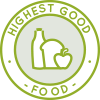 One Community is demonstrating how to create global sustainability through Highest Good food that is more diverse, more nutritious, locally grown and sustainable, and part of our open source botanical garden model to support and share bio-diversity:
One Community is demonstrating how to create global sustainability through Highest Good food that is more diverse, more nutritious, locally grown and sustainable, and part of our open source botanical garden model to support and share bio-diversity:
- Learn about the structures: Hoop House Hub | Aquapini & Walipini Open Source Hub
- See what we’ll be growing: Gardens & Hoop Houses | Large-scale Structures | Food Forest | TA
This week, the core team initiated the final comprehensive review for the Master Tools, Equipment, and Materials/Supplies list. The team completed the correction of all remaining acronyms, finalizing them as follows: Goat (GT), Chicken (CHICK), Rabbit (RAB), Apiary (APY), Aquapini (AQ), Walipini (WA), Botanical Garden (BG), Large Garden (LG), Food Forest (FF), Hoop House (HH), Soil Amendment (SA), Earthbag Village (EBV), Energy (ENRG), Orchard (ORCH), and Tropical Atrium (TA). The team added Tractor attachments to numerous projects and other items to various lists. The Highest Good Food initiative is a key component of One Community’s open source plans, focused on how to create global sustainability, and exemplifies the organization’s commitment through innovative design and implementation. Below are some images showcasing this work.
Chelsea Mariah Stellmach (Project Manager) continued her work on the Transition Food Self-sufficiency Plan menus and customization spreadsheets. She met with Tyson to review Jae’s instructions for finalizing the reports. She followed up with Shireen but did not receive a response, and after Tyson went on holiday, she decided to create two graphics herself as placeholders. She also made revisions to the text of the tutorial. As an essential aspect of One Community’s open source goals, the Highest Good Food initiative supports how to create global sustainability as a foundation for sustainable living. Below are some images showcasing this work.
Dirgh Patel (Volunteer Mechanical Engineer) continued assisting with the Climate Battery design evolutions. He read about underground thermal energy storage and migration systems for greenhouses that capture daytime heat and redistribute it at night to stabilize internal temperatures, including the use of materials such as polycarbonate panels and polyethylene films. This effort is an example of One Community’s commitment to how to create global sustainability. He studied the role of sterile, controlled-environment greenhouses with HVAC filtration, positive pressure systems, and thermal insulation in maintaining plant health and yield efficiency. In addition, he reviewed greenhouse design principles related to structure, glazing, ventilation, pest prevention, and adaptable layouts to improve durability, energy efficiency, and crop support. He edited the final report by replacing Excel sheets with a Google Sheet, adding photo links, and providing detailed explanations for equations calculating total heat loss from convection and infiltration, as well as heat gain from solar radiation and the volumetric flow rate required for cooling. One Community’s open source mission is powerfully reflected in the Highest Good Food initiative, which is focused on how to create global sustainability for global benefit. The following visuals illustrate highlights from this effort.
Faeq Abu Alya (Architectural Engineer) continued his work on the Earthbag Village, developing house designs for the Southwest and Southeast regions. His focus was on material updates, integration of new features, and improvements to existing visualizations. Tasks included standardizing material selections across comparable spaces and replacing outdated components. Render settings were refreshed to improve clarity and consistency, textures were updated where needed, and model layers were organized to streamline later edits. Visualization outputs were regenerated to reflect the latest changes. One Community’s open source launch of how to create global sustainability begins with Earthbag Village, the first of seven planned villages providing housing, and is also powerfully reflected in the Highest Good Food initiative. Below are some pictures related to this work.
Jay Nair (BIM Designer) continued working on Aquapini and Walipini Planting and Harvesting lighting and HVAC design. He worked on the lighting energy calculations for Walipini Greenhouse 1, focusing on assessing the requirements for different zones and updating the figures to reflect the latest design inputs. He also adjusted the formatting of the document to align with established standards, ensuring consistency and accuracy throughout the content. The Highest Good Food initiative plays a leading role in One Community’s open source platform, promoting and supporting how to create global sustainability through sustainable and participatory development. See below for pictures related to this work.
Nitin Parate (Architect) continued contributing to the Highest Good Food. The work included developing an axonometric view of the site and applying colour in GIMP to prepare a sun path diagram. He focused on maintaining scale accuracy, clear proportions, and integrating recent design updates to illustrate sunlight movement. The axonometric view of the overall site was completed, coloured in GIMP for the sun path diagram, and submitted for review, with attention given to accurate representation and improved clarity. In parallel, work began on rendering the Walipini plan, which is still in progress and has not yet been submitted for review. This part of the work is focused on achieving accurate scale, proportions, and layout while incorporating design changes to refine clarity and ensure alignment with the project’s technical and visual requirements. The Highest Good Food initiative plays a leading role in One Community’s open source platform, promoting and supporting how to create global sustainability through sustainable and participatory development. Below are some images showcasing this work.
Keerthi Reddy Gavinolla (Software Developer) continued working on the Highest Good Food page, specifically, details for the Soil Amendment page. She started with her admin work and then continued working on the Soil Amendment and Initial Off-grid Site Preparation page. She verified both the document and the website, made the necessary changes accordingly, and ensured formatting and structure were consistent. Keerthi also tested a few pull requests on the development site and completed her admin work for the week. Built on One Community’s open source foundation, the Highest Good Food initiative is dedicated to how to create global sustainability, empowering communities through self-sustaining systems. View examples of her work in the pictures below.
Pallavi Deshmukh (Software Engineer) continued working on adding the new Zenapini 2 content to the Aquapini and Walipini Planting and Harvesting page. She created new content for blog 647 and worked with teammates by reviewing their suggestions and incorporating feedback to produce a clear and consistent final version. She completed and submitted information for five interviews. She applied Jae’s feedback and finished adding Zenapini #2 content from Silin to the website, completed the page, and resubmitted it for review. Once Zenapini #2 was done, she moved on to Walipini #2, incorporating Junyi Shi’s work with updated text, links, and images for the webpage. In alignment with One Community’s open source objectives, the Highest Good Food project integrates the concept of how to create global sustainability into a larger vision of regenerative living. Her contributions are highlighted in the collage below.
Shivangi Varma (Volunteer Architectural Designer And Planner) continued contributing to the Highest Good Food. She created graphics for the page and also coordinated with the volunteer architect and volunteer graphic designer on the graphics and diagrams to support Highest Good Food Infrastructure for Small Scale Organizations section on HGF page, and Site Sun Study on Open Source Hub page. The Highest Good Food initiative plays a leading role in One Community’s open source platform by promoting sustainable and participatory development focused on how to create global sustainability. Below are visuals highlighting this work.
Tyson Denherder (Volunteer Pioneer Team Member) continued contributing to the Highest Good Food. Tyson finished reviewing the Recipe Build Out Tool and the Master Recipe Template, and worked with Chelsea to complete the Recipe Build Out Tool Tutorial. He made adjustments to the VnOMultipliers page and the MasterFoodCosts page within the Recipe Build Out Tool to improve functionality, and revised the tutorial to make it easier to understand. The Highest Good Food initiative plays a leading role in One Community’s open source platform by promoting sustainable and participatory development focused on how to create global sustainability. Below are images related to this project.
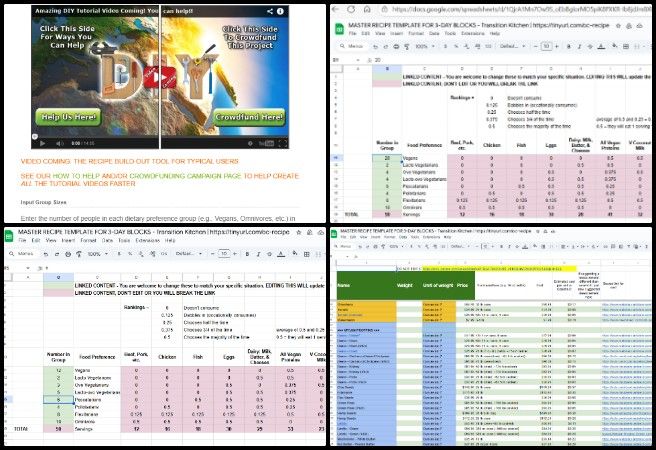
HIGHEST GOOD ENERGY PROGRESS
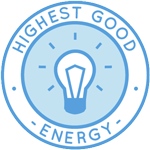 One Community is demonstrating how to create global sustainability through Highest Good energy that is more sustainable, resilient, supports self-sufficiency and includes solar, wind, hydro and more:
One Community is demonstrating how to create global sustainability through Highest Good energy that is more sustainable, resilient, supports self-sufficiency and includes solar, wind, hydro and more:
- Learn about the open source sustainable-energy foundations: Solar, Hydro, and Wind
- Explore our research into the most sustainable products and companies for saving water and energy: Insulation, Eco-laundry, Lightbulbs and Light Bulb Companies, Doors and Door Companies, Windows and Window Companies, Toilets, Faucets and Faucet Accessories, Urinals, and more.
This week, Shravan Murlidharan (Volunteer Electrical Engineer) continued supporting with the Highest Good Energy. Shravan focused on editing content from the One Community Energy webpage and aligning it with project materials. Work included reviewing each section for relevance, applying the existing color-coding scheme, and inserting project-specific information where gaps or inconsistencies appeared. Terminology was standardized to match internal usage, and duplicated points were merged to reduce redundancy. This work contributes to One Community’s commitment to how to create global sustainability. Headings and subheadings were adjusted for consistency, and lists were reformatted for clarity. Cross-references within the document were checked so related topics point to the same terms and figures. Notes were added to mark items needing source verification, and placeholders were flagged where additional data is required. Spelling, grammar, and punctuation were corrected, sentence structure was simplified, and passive phrasing was reduced where appropriate. Tables were aligned to a common layout, units were verified, and any mismatched values were queued for a follow-up check. The change log was updated after each editing pass to record what sections were touched and why. The final pass of the week focused on proofreading, ensuring color codes match the defined legend, confirming that inserted material reads smoothly with the original text, and preparing a short list of next edits to address open items. One Community’s open source mission is powerfully reflected in the Highest Good Energy initiative, which helps demonstrate how to create global sustainability as a model for global benefit. Below are some of the images showcasing this work.
HIGHEST GOOD EDUCATION PROGRESS
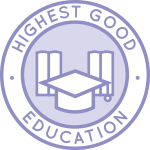 One Community is demonstrating how to create global sustainability through Highest Good education that is for all ages, applicable in any environment, adaptable to individual needs, far exceeds traditional education standards, and more fun for both the teachers and the students. This component of One Community is about 95% complete with only the Open Source School Licensing and Ultimate Classroom construction and assembly details remaining to be finished. We’ll report on the final two elements to be finished as we develop them. With over 8 years of work invested in the process, the sections below are all complete until we move onto the property and continue the development and open sourcing process with teachers and students – a development process that is built directly into the structure of the education program and everything else we’re creating too:
One Community is demonstrating how to create global sustainability through Highest Good education that is for all ages, applicable in any environment, adaptable to individual needs, far exceeds traditional education standards, and more fun for both the teachers and the students. This component of One Community is about 95% complete with only the Open Source School Licensing and Ultimate Classroom construction and assembly details remaining to be finished. We’ll report on the final two elements to be finished as we develop them. With over 8 years of work invested in the process, the sections below are all complete until we move onto the property and continue the development and open sourcing process with teachers and students – a development process that is built directly into the structure of the education program and everything else we’re creating too:
- Program Overview: Education Open Source Hub
- How the components work together in designing human orchestrated eco-abundance: How to use the Education for Life Program
- Lesson Plans for Life – Lesson Plans How-to
- Foundations of Outstanding Leaders, Teachers, and Communicators
- Curriculum for Life
- Teaching Strategies for Life
- Learning Tools and Toys for Life
- Evaluation and Evolution
This week, Anuneet Kaur (Administrator) continued contributing to the progress of the Highest Good Education software platform by creating Figma design elements, and enhancing the overall visual layout. She focused on enhancing the Project manager dashboard in the Highest Good Education platform. She focused on improving the Project Manager dashboard in the Highest Good Education platform. She refined and updated the navigation elements in Figma based on Harshitha’s feedback, ensuring alignment in structure and design across both user experiences. She explored layout consistency, improved user flow, and tested responsive design adjustments to optimize usability. This task reflects One Community’s goal of how to create global sustainability. Anuneet also researched resources for the most sustainable windows, reviewed scholarly articles, and compiled relevant statistics for the graphic process. She ensured all members were included in the live blog task and flagged any absences. Additionally, she began drafting content and selecting images for the Highest Good Education Program Licensing and Accreditation webpage. Anuneet reviewed work and provided feedback as part of the training team and took interviews as part of the hiring team. She also reviewed Yulin’s infographic on sustainable research and provided feedback. She fulfilled administrative responsibilities by editing summaries and collages for the Highest Good Society team, Highest Good Education, and Core Teams, while reviewing fellow admin submissions for completeness and accuracy. The One Community model of how to create global sustainability, exemplified by sustainably built classrooms like these, fosters lasting impact on a global scale. Her recent contributions are featured in the collage below.
Harshitha Rayapati (Program Manager) continued advancing the Highest Good Education platform by detailing deliverables, developing Figma designs, and expanding the visual layout of the student dashboard. This work aligns with One Community’s long-term focus on how to create global sustainability. Her contributions included providing comments and suggestions to Sphurthy and finalizing Deliverable 1 action items before transferring them into the HGN Phase 4 document. She also provided feedback on Ravi’s work and developed the Figma design for the teacher dashboard. Additionally, Harshitha worked on formatting and breaking down Sphurthy’s action items for Deliverable 1 into smaller tasks to match the structure used in HGN Phase 3, ensuring consistency in format. Her week concluded with attaching the Figma design to the action items and providing comments on Deliverable 2 action items submitted by Sphurthy. She also compiled the weekly blog update, reviewed Housing’s weekly progress, edited the blog page, and created a collage. The One Community model of how to create global sustainability, exemplified by sustainably built classrooms like these, drives meaningful global change. The collage below highlights her recent contributions.
Ravi Kumar Sripathi (Software Engineer) continued working on the Highest Good Education software platform by creating Figma designs and enhancing the overall visual layout. He designed navigation bars for all user roles and detailed student profile page wireframes, providing an overview of academic progress, achievements, and interests. The profile includes panels for student details, a portfolio for work and badges, and tabbed views for lessons, tasks, and progress. This work strengthens One Community’s vision of how to create global sustainability. The design uses “education molecules” and “atoms” to visualize learning, dynamically indicating progress and opening detailed views. Teachers can access lesson-level strategies, task grades, and learning tools, while students track coursework and progress indicators. The profile also includes collapsible lists, personalized interest tracking, and saved teaching or learning strategies. Ravi also developed a grading and document review workflow for the teacher dashboard, supporting PDFs and Word submissions. The workflow features a split view with inline document preview, feedback and grading options, and page-by-page navigation. Teachers can save progress, request changes, and assign grades on a scale from A+ to C. Overall, these designs improve platform usability, streamline navigation, and provide integrated tools for efficient grading. The One Community model of how to create global sustainability, exemplified by sustainably built classrooms like these, drives lasting global change. Below are images related to his work.
HIGHEST GOOD SOCIETY PROGRESS
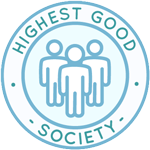 One Community is demonstrating how to create global sustainability through a Highest Good society approach to living that is founded on fulfilled living, the study of meeting human needs, Community, and making a difference in the world:
One Community is demonstrating how to create global sustainability through a Highest Good society approach to living that is founded on fulfilled living, the study of meeting human needs, Community, and making a difference in the world:
- Read the Highest Good society overview: Highest Good Society
- Learn about the model for fulfilled living and sharing: A Day in the Life
- Learn about the 4 economic models: RBE | For-profit | Non-profit | Entrepreneurship
- Learn about our open source community collaboration and management software: The Highest Good Network
This week, the core team completed over 49 hours managing volunteer work reviews, handling emails, overseeing social media accounts, supporting web development, identifying new bugs, integrating bug fixes for the Highest Good Network software, and interviewing and onboarding new volunteer team members. They also produced and incorporated the video above, illustrating how to create global sustainability forms the foundation of One Community’s broader mission. The image below highlights some of this work.
Govind Sajithkumar (Project Manager) continued focusing on analytics and content management for Meta’s Facebook and Instagram channels. He managed the weekly social media content rotation by preparing, scheduling, and uploading posts. He updated the Open Source spreadsheet with all new content information and refreshed the social media analytics spreadsheet with the latest performance metrics and audience demographics. Additionally, he completed PR Review Team Management by providing feedback on team members’ documents, editing a WordPress site with the weekly team summary and collage, and updating both the PR Review Team Table and the HGN PR spreadsheet. He submitted his admin feedback table, supporting One Community’s mission of how to create global sustainability. The images below highlight key aspects of this work.
Jaiwanth Reddy Adavalli (Project Manager) continued developing the Job Applicants page along with key components of the Highest Good Network Phase 2 and Phase 4 dashboards, including the PR Team analytics section. He worked on the Listing and Bidding Dashboard by designing graphs and noting related action items. He prepared documentation and recorded a video tutorial to explain the pull request review process for new volunteers. Jaiwanth tracked updates in software team management documents, tested multiple pull requests, and reviewed submissions from the volunteer team assigned to him. This work supports One Community’s commitment to how to create global sustainability. The images below highlight his contributions.
Rajrajeshwari Gangadhar Sangolli (Data Analyst) continued working on the Google Ads management and strategy evolution. She worked on administrative tasks for Highest Good Food and Highest Good Energy, including updating summaries, creating and organizing folders, and preparing collages. She reviewed contributions from Georgina, Sai, Indra, and Divanshu, ensuring accuracy in images, collages, folders, and SEO materials. She also began keyword research reports for specific projects. This effort supports One Community’s pathway to how to create global sustainability. She submitted the weekly report, reviewed comments, made corrections, and verified accuracy by reviewing training videos. Rajrajeshwari then focused on Google Ads and performance tracking, studying training videos, analyzing available data, and making notes for future work. She examined the current ad setup, studied Google recommendations, and tracked last year’s performance data with KPIs and data visualizations. She created a plan including three new campaigns, implemented Google Ads suggestions, and monitored weekly performance changes. She also identified new keywords for the Highest Good Energy and Highest Good Food pages while refining the overall Google Ads strategy. This project plays a vital role in One Community’s commitment to how to create global sustainability. The images below highlight key aspects of this work.
ADMINISTRATION TEAM
The Administration Team’s summary, which covers their work on the Highest Good Network, was managed by Prudhvi Marpina (Machine Learning Engineer) and includes Ashutosh Mishra (Software Engineer), Dashaarna Srinivasa (Project Engineer), Divanshu Bakshi (Team Admin), Harsha Ramanathan (Administrator), Indra Anuraag Gade (Software Engineer and Team Administrator), Neeharika Kamireddy (Data Analyst), Olawunmi “Ola” Ijisesan (Administrative and Management Support), Olimpia Borgohain (Data Analyst and Team Administrator), Rachna Malav (Data Analyst), Rishi Sundara (Quality Control Engineer and Team Administrator), Rishitha Adepu (Administrator), and Samhitha Are (Administrator). The Highest Good Network software helps manage and objectively measure progress toward creating global sustainability through administrative support, documentation, testing, training, recruiting, and content management. This activity demonstrates One Community’s focus on how to create global sustainability.
This week, Ashutosh created a Pinecone vector database for chatbot documents, initiated a wireframe structure, scrubbed source documents, developed a WordPress cleanup tool, tested regex and PHP, and finalized updates for Teams 74 and 76 while providing feedback to new volunteers. Dashaarna supported Earthbag Village and Duplicable City Center projects by reviewing design templates, identifying missing details, coordinating with the engineering team, applying redline markups, preparing DWG and PDF versions, and refining areas such as FEA analyses, spa tub redesign, snow load validations, and greywater reuse systems. He also completed an interview and documented the process. Divanshu completed training activities, supported Phase 2 software testing, practiced blog writing, and began learning social media posting and analytics. Georgina finished onboarding, began team reviews and summaries, and prepared to review the software team. Harsha worked on AI music creation using Suno AI, organized outputs, made revisions based on feedback, and produced additional files. Indra completed training on review and feedback management, edited weekly summaries, optimized images in GIMP with SEO, created collages, and supported action items including social media, software testing, and AI music tasks.
Neeharika reviewed software management documents and PR dashboard items, followed up on tasks, completed admin duties, and conducted six interviews. Ola reviewed the HGN progress tracking sheet, checked team compliance, organized files, prepared workspaces, and uploaded weekly summary reports with images. Olimpia managed LinkedIn posts, set up blogs for two teams, reviewed new volunteers’ work, and completed admin tasks. Rachna focused on SEO, reviewed website pages, caught up on emails, and attempted to schedule candidate interviews. Rishi followed up on merge conflicts and Node v20 upgrades, reviewed PRs, merged blogs into blog #647, and completed SEO updates. Rishitha updated the weekly blog, guided new team members, began daily posting on Threads and Twitter, and scheduled interviews while updating the hiring spreadsheet. Samhitha finalized blog 647, created a collage, provided training feedback, and performed Level 1 Phase 3 software product testing by retesting PRs, coordinating with developers, addressing comments, and reviewing Figma designs. All of this work supports One Community’s ongoing commitment to how to create global sustainability. See the collage below.
GRAPHIC DESIGN TEAM
The Graphic Design Team’s summary includes Qinyi Liu (Graphic Designer) and Yulin Li (Graphic Designer), who focused this week on creating graphic designs that support how to create global sustainability. This week, Qinyi designed and edited characters for posters, revised older designs, created new designs, and prepared the bio image and announcement for Ramsundar Konety Govindarajan. Yulin revised four infographic designs, created three new ones, improved the collaboration announcement with Sara’s feedback, managed version control through Dropbox, and participated in weekly discussions. Their work highlights how to create global sustainability. See the Highest Good Society pages and the collage below for examples of their work.
HIGHEST GOOD NETWORK PROGRESS
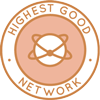 One Community is demonstrating how to create global sustainability through open source Highest Good Network® software that is a web-based application for collaboration, time tracking, and objective data collection. The purpose of the Highest Good Network is to provide software for internal operations and external cooperation. It is being designed for global use in support of the different countries and communities replicating the One Community sustainable village models and related components.
One Community is demonstrating how to create global sustainability through open source Highest Good Network® software that is a web-based application for collaboration, time tracking, and objective data collection. The purpose of the Highest Good Network is to provide software for internal operations and external cooperation. It is being designed for global use in support of the different countries and communities replicating the One Community sustainable village models and related components.
- Learn about our open source community collaboration and management software: The Highest Good Network
This week, the core team continued working on the Highest Good Network software pull requests and resolved several key issues. They performed HGN PRs testing and confirmed fixes for several items, including correcting the issue with updating the Start Date on the Profile page, improving the loading speed of the Weekly Summaries Report through a tab data fix (#3447+1352), applying a CSS hotfix for the LB Homepage (#3568), making resources available in the Add Task modal (#3576), and fixing the Add Task modal dropdown issue (#3587). This work is part of One Community’s broader mission on how to create global sustainability.
Items not fixed included the Rishwa skills dashboard user card (#3449+1407), creating a login page for the Listing homepage frontend (#3539) where the removal of Strawberry Village was requested, the HGN Questionnaire User Skills Profile Page (#3546) which displayed an error page, disallowing negative hours input in the WBS Add Task form (#3448), and registration by event type and location (#3370) which displayed the wrong page. Additional work included reporting an issue after testing the “New Max” badge, where the test account logged 51 tangible hours for the week ending Aug-09-25 and the badge numbers updated correctly but the Modified Date and Earned Date values did not update, creating a new test account to test badges, and testing the “2x Minimum Hours” badge. See the Highest Good Society and Highest Good Network pages for more on how this work supports One Community’s commitment to how to create global sustainability. The collage below highlights some of these efforts.
ALPHA SOFTWARE DEVELOPMENT TEAM
This week, the Alpha Software Team, working on the Highest Good Network software, was managed by Lin Khant Htel (Frontend Software Developer), Carlos Martinez (Full-Stack Software Developer), and Nikita Kolla (Full-Stack Developer). This software serves as an internal management and communication platform designed to support how to create global sustainability. Lin reviewed and approved pull request (PR) #3695, tested the changes locally to confirm no test cases failed, consulted with team members, reviewed weekly summaries, photos, and videos submitted by Alpha team members, and performed management duties for the Alpha Team. Carlos began development on dark mode changes to the messaging interface of the listing and bidding project by updating the backgrounds of all elements to support dark mode and ensuring large components were properly aligned. Nikita continued work on the Phase 2 Summary Dashboard, focusing on the backend for the Project Status donut chart, resolving layout issues caused by overlapping components, and improving organization by moving the CSS into a separate file. See the Highest Good Society and Highest Good Network pages to learn more about how this relates to how to create global sustainability. See some of the team’s work in the collage below.
BINARY BRIGADE SOFTWARE DEVELOPMENT TEAM
The Binary Brigade Team’s summary, presenting their work on the Highest Good Network software, was managed by Nikhil Routh (Software Engineer) and included Amalesh Arivanan (Software Engineer), Ramsundar Konety Govindarajan (Software Engineer), Harika Majji (Software Engineer), Harsha Rudhraraju (Software Engineer), Kanishk Agarwal (Software Engineer), Rishitha Chirumamilla (Software Engineer), Rohit Mamidi (Software Engineer), Manvi Kishore (Software Engineer), and Taariq Mansurie (Full-Stack Developer). The Highest Good Network software is our tool for managing and objectively measuring progress, ensuring that all contributions are effectively tracked, aligned with our mission, and how to create global sustainability.
This week, Kanishk reviewed three pull requests, covering two backend test updates and one frontend CSS fix, verified code quality and visual consistency, and reviewed the bug fixes document while outlining the implementation plan for improvements to the Bell Notification feature. This work contributes to One Community’s commitment to how to create global sustainability. He made progress on Part A of the Bell Notification task by implementing Pacific Time week boundaries, adding 48-hour and 24-hour notification thresholds, and ensuring localStorage reset logic functioned properly, as well as creating a time-travel testing kit to support QA without requiring page reloads, which was tested through console-based simulation and live dashboard testing. This effort supports One Community’s focus on how to create global sustainability. Harika raised a pull request to update the lbdashboard/register page by migrating .css files to .module.css, merged the changes, and confirmed functionality in the development environment while also working on fixing layout issues on the Bidding Page related to design inconsistencies across screen sizes, addressing image responsiveness, and improving dark and light mode differentiation. Rohit focused on understanding the badge system by reviewing badge criteria, identifying those tied to time progression versus activity-based triggers, and exploring approaches for controlled simulations to streamline testing and improve coverage, with preparatory work for designing test strategies in progress. This task reflects One Community’s goal of how to create global sustainability.
Nikhil migrated legacy CSS files to CSS Modules for the TeamOrgLocations and Teams components, updated import statements and className attributes in JSX files, addressed compatibility issues from the upgrade to version 20, made updates for PR 3770, fixed timelog and weekly summary issues in PR 3773 based on review feedback, tracked CSS-to-Module migration progress, and reviewed PR 3864. This development aligns with One Community’s approach to how to create global sustainability. Amalesh fixed dashboard message display issues on wider screens, resumed work on an older pull request involving backend issue 704 and frontend issue 1831, resolved errors and merge conflicts, tested and documented the fixes with screenshots and videos uploaded to Dropbox, tracked time using the HGN timer, and completed onboarding steps for project tool access. Harsha worked on cleanup and completion for the Application Page/Function task, creating new tasks for failing pull requests, following up with developers, and reviewing multiple pull requests, including frontend PRs 3675, 3811, 3609, and 3741, as well as frontend/backend pairs 3910 + 1663, 3555 + 1413, and 3848 + 1637, identifying issues with responsiveness, dark mode, invalid inputs, and overlapping elements while marking verified ones complete and documenting timelines. This update adds to One Community’s work in how to create global sustainability.
Manvi tested four badge methods, including Personal Max, Most Hrs in Week, X Hours in 1 Week, and Minimum Hours Multiple, using numeric cases to validate thresholds and confirm proper behavior across different input ranges. Ram resolved two issues in the Highest Good Network application related to task editing: backend PR 1666 fixed inverted validation logic that blocked editing when time fields were nonzero, and frontend PR 3914 fixed a useEffect hook preventing the Update button from appearing after reopening the edit modal. This work plays a role in One Community’s journey of how to create global sustainability. Taariq resolved merge conflicts in backend and frontend repositories, submitted new pull requests for filterColor functionality, fixed bugs with filterColor and Select All on the Weekly Summaries Reports page, ensured persistence of filter colors after refresh, implemented bulk updates, debugged stale data caching issues, updated related logic across reducers, controllers, routes, models, and helpers, and verified updates through testing. This effort is an example of One Community’s commitment to how to create global sustainability. Rishitha resolved approximately 260 lint errors in the TeamMemberTasks directory, reducing them to zero, verified fixes through testing and lint checks, and encountered a pre-push hook failure with Husky that prevented pushing changes, leaving the pull request pending until the issue is resolved. See the Highest Good Society and Highest Good Network pages for more about how this relates to how to create global sustainability. The collage below shows images of their work.
BLUE STEEL SOFTWARE DEVELOPMENT TEAM
The Blue Steel Team’s summary, presenting their work on the Highest Good Network software, was managed by Sheetal Mangate (Software Engineer) and included Humemah Khalid (Software Engineer/Backend Developer) and Linh Huynh (Software Engineer). The Highest Good Network software is our tool for managing and objectively measuring progress, ensuring that all contributions are effectively tracked, aligned with our mission, and how to create global sustainability.
This week, Linh worked on fixing the edit functionality of emails in the Weekly Company Summary Email for Admins. After setting up the local environment and pulling both the frontend and backend codebases, she replicated the issue where updated email addresses did not reflect immediately after saving. This update adds to One Community’s work in how to create global sustainability. She reviewed related pull requests and the code change history, tested the functionality, and confirmed the reported bug. Using the browser’s network tab, she analyzed API behavior to rule out server-side delays and identified that the frontend was re-fetching the recipient list after updates instead of applying the change directly to the state. A fix was implemented to update the Redux state immediately after a successful API response, removing the delay. Additional testing was completed for add, edit, and delete actions to ensure the UI reflected all changes without requiring a refresh. This work is aligned with One Community’s long-term focus on how to create global sustainability.
Humemah updated the database and frontend to support storing specific reasons for blue square infringements. Backend changes included adding a dedicated field for a predefined reason, such as “missingHours,” to each new infringement record, while existing records remained unchanged. This step contributes directly to One Community’s efforts in how to create global sustainability. On the frontend, the Schedule Blue Square Reason form was updated with a dropdown for selecting predefined reasons. Sheetal worked on two separate issues. The first was developing the user interface for creating a Reddit post, with support for multiple post types, including plain text, image or video upload, and URL. She implemented post type selection logic to allow dynamic UI updates and added functionality to upload and remove images. The second issue involved resolving merge conflicts in the codebase. While working through this, she encountered problems with a pre-commit hook that required updating Node.js to version 20. After upgrading, additional problems arose, including ESLint errors caused by stricter lint rules or misconfigurations, and npm install failures likely due to compatibility issues or missing dependencies. This work is part of One Community’s broader mission on how to create global sustainability. Work is ongoing to resolve these environment and tooling issues to unblock the merge and maintain the development workflow. See the Highest Good Society and Highest Good Network pages for more, and the collage below for images of their work.
CODE CRAFTERS SOFTWARE DEVELOPMENT TEAM
The Code Crafters Team, covering their work on the Highest Good Network software, was managed by Sai Shekhar Reddy Moola (Software Engineer) and includes Ajay Naidu (Software Engineer), Ashrita Cherlapally (Software Engineer), Chaitanya Swaroop Kumar Allu (Software Engineer), Humera Naaz (MERN developer), Juhitha Reddy Penumalli (Software Engineer), Rohith Mallipudi (Software Engineer), Ravi Kumar Sripathi (Software Engineer), Sphurthy Satish (Software Engineer). The Highest Good Network software is how we’ll manage and objectively measure our process for establishing abundant community systems through our social architecture, construction, production, and maintenance processes, and support widespread and lasting eco-lifestyle access. This effort exemplifies One Community’s open-source commitment to demonstrating how to create global sustainability.
This week Ajay worked on backend and frontend tasks for the HighestGoodNetwork project, including adding logic to the Phase 2 “List of Teams” page to display a “Team not found” message when no results are returned, implementing clickable buttons for active and inactive teams to filter results, creating and merging a backend pull request, resolving lint issues, and opening another pull request to address deprecated packages, while on the frontend he updated the Blue Square Stat chart in dark mode, fixed test cases, and confirmed correct display in the Reports section; Ashrita enhanced backend APIs for the application analytics dashboard to aggregate data by country with filters, seeded MongoDB with test data, fixed date range issues, integrated the frontend with a world map using react-simple-maps, added tooltips and a color scale, and debugged a refresh issue by reviewing React Query caching and state management. This effort supports One Community’s focus on how to create global sustainability. Chaitanya improved the Access Management system for One Community by implementing automation for Sentry access revocation, reducing API calls, adding debug logging, ensuring linter compliance, handling errors and edge cases, creating aligned documentation, and testing the changes to support production readiness; Humera worked on PR 3655 to resolve version mismatches causing build inconsistencies, align dependencies, and connect backend services with the frontend, encountering difficulties with API configuration, request handling, and authentication that require further debugging despite resolving environment and version issues. This progress highlights One Community’s mission toward how to create global sustainability. Juhitha enhanced aiGPTController.js with improved error handling, API key validation, and environment checks, created a generateWeeklySummary endpoint with metadata outputs, updated aiGPTRouter.js and frontend components to integrate the feature, resolved dependency issues and merge conflicts, documented steps for integrating the Google Gemini AI “Write it for me” feature, and spent time on the Phase 2 Summary Dashboard stacked bar graph task before pausing for confirmation on ownership. This work is part of One Community’s broader mission on how to create global sustainability. Ravikumar designed navigation bars for all user roles and student profile wireframes in Figma showing academic progress, achievements, portfolios, and detailed panels with collapsible lists, dynamic atoms, and tabbed views for teachers, students, and support staff, and also designed a grading and document review workflow for teacher dashboards with inline previews, feedback and grading tools, progress saving, and grading scales; Rohith collaborated with team members and reviewed multiple pull requests, including providing feedback to Kedarnath on logo misalignment and responsiveness issues, noting his fix of an overflow issue in PR #3811, and clarifying updates to the Job Listing Page. This work contributes to One Community’s commitment to how to create global sustainability. He tracked progress on Meenakshi’s job application form task, coordinated reviews for Pranav G’s PR #3741 and Alisha’s PR #3910, and supported the review and merge process with the team lead. Sai Moola worked on the Phase 2 Summary Dashboard Supplier Performance bar graph, completing the backend portion with data verified through Postman, beginning frontend integration under the Tools and Tracking section, and merging all open pull requests; and Sphurthy refined Deliverable 1 by updating backend logic for lesson plan task assignment with prerequisite validation and metadata, expanding the GET endpoint for task display, defining new APIs and database structures for student profiles and teacher assignments, completing backend and frontend components for student evaluation results with score breakdowns and notifications, and setting up the system with Node.js version 20. These contributions strengthen One Community’s open-source mission of providing replicable solutions that model how to create global sustainability.
DEV DYNASTY SOFTWARE DEVELOPMENT TEAM
The Dev Dynasty Team’s summary, covering their work on the Highest Good Network software, was managed by Zhifan Jia (Software Engineer) and includes Adithya Cherukuri (Volunteer Software Engineer), Deekshith Kumar Singirikonda (Developer), Dharmik Patel (Software Engineer), Manvitha Yeeli (Software Engineer), Mohan Satya Ram Sara (Software Engineer), Nahiyan Ahmed (Full-Stack Software Developer), Neeraj Kondaveeti (Software Engineer), Prasanth Bhimana (Software Engineer), Saicharan Reddy Kotha (Software Engineer), Sankar Sai (Software Engineer), Shraddha Shahari (Software Engineer), Vamsi Krishna Rolla (Software Engineer), Vamsidhar Panithi (Software Engineer), and Varsha Karanam (Software Engineer). The Highest Good Network software is how we’ll manage and objectively measure our process for creating an ecological living paradigm through our social architecture, construction, production, and maintenance processes to support widespread and lasting eco-lifestyle access. This progress helps drive One Community’s demonstration of how to create global sustainability.
This week, Nahiyan reviewed PR 3877, confirming that the first reported issue related to border display was resolved while noting that the second issue preventing users from adding other members to a project was still unresolved and provided feedback for correction. Vamsi worked on completing the unfinished frontend portion of the tools rental cost task, ensuring integration with backend APIs, fixing incomplete components, addressing missing logic, validating data flow, and refining the UI for consistency. This development aligns with One Community’s approach to how to create global sustainability. Dharmik contributed 20 hours to the Application/Job Posting feature by creating a question set data model with indexes, updating JobFormsModel.js with new fields and references, enhancing the Collaboration Controller and backend routes, and improving permission utilities and frontend access control with clone, edit, and delete capabilities for managing question sets. Manvitha focused on resolving lint issues, addressing formatting errors in the Collaboration folder, fixing ignored files in the Dashboard folder with PR 3891, and reducing unresolved ESLint violations in the User Management folder from 217 to 51 by correcting unused imports, function parameter usage, async handling, and test setup. This work plays a role in One Community’s journey of how to create global sustainability. Saicharan reviewed and tested PRs for Phase-2 action items with emphasis on CSS modularization, identified whether components used global or module CSS, created high-priority action items instructing developers to rename files, update imports, and apply styles standards across multiple PRs, and documented progress in the Phase-2 doc. Varsha reviewed and cleaned up module CSS in several pull requests to align with standards, resolved discrepancies, and began developing the FAQ page by creating a structured layout to organize questions and answers for future enhancements. This update adds to One Community’s work in how to create global sustainability. Prasanth reviewed more than 50 pages of Phase-2 documentation, tested frontend and backend PRs locally to validate implementation, identified gaps that led to new action items, collaborated with developers through Slack for fixes, coordinated with Jae for updates, contributed to auditing Phase-2 implementation, created and tested with dummy data, reported broken functionality, and suggested UI/UX improvements in collaboration with Saicharan and Varsha. Deekshith worked on defining REST API endpoints for user management, developed the LBLogin.jsx component with state management, authentication, and redirection logic using React and Redux, and updated the LBRegister.css stylesheet to support login and registration UI with validation feedback. This work plays a role in One Community’s journey of how to create global sustainability. Adithya advanced the Job Posting Page Analytics project by completing the horizontal bar graph comparing pledged months by role, finalizing backend and frontend integration, resolving lint and dependency issues, updating chart filters, and later beginning work on the Popularity by Time line chart by setting up backend structures, planning MongoDB integration, and progressing on API integration and data visualization. Neeraj finalized the Job Analytics Page in the React frontend by correcting naming inconsistencies for compatibility, verifying builds and tests locally, and submitting a pull request with the completed updates. This effort is an example of One Community’s commitment to how to create global sustainability. Zhifan completed the grouped bar graph for injury severity by projects, tested and submitted a PR with a demo, and upgraded the backend from Node 14 to Node 20 by updating version constraints, workflows, and dependencies, resolving issues with sharp, verifying compatibility through linting and audit checks, testing scheduler and cron functionality, performing integration testing of job modules, and confirming proper initialization and stability under Node 20. See the Highest Good Society and Highest Good Network pages for more on how this relates to how to create global sustainability. Explore some of the team’s work in the collage below.
EXPRESSERS SOFTWARE DEVELOPMENT TEAM
The Expressers Team’s summary, which covers their work on the Highest Good Network, was managed by Rahul Trivedi (Software Engineer) and includes Meenashi Jeyanthinatha (Full-Stack Developer), Reina Takahara (Software Developer), and Tanmay Arora (Software Engineer). The Highest Good Network software helps us manage and objectively measure our progress toward how to create global sustainability through innovative software development, testing, and collaboration. This week, Meenashi addressed a pull request issue related to Node v20 and resolved merge conflicts, during which two build errors occurred in the CI run. The first was a TypeError where emailSender returned undefined when process.env.sendEmail was not set, leading to .then() being called on undefined; this was fixed by updating emailSender to always return a Promise. This progress is tied to One Community’s dedication to how to create global sustainability. The second was an NPM error related to @azure/storage-blob, which was resolved by updating the Node.js version to v20. Although the CI build continued to fail despite running without errors locally, it was clarified that the backend was not yet on Node v20, and the team was informed with a request for guidance on whether to roll back the change or leave the pull request as is. On the frontend, a component in the Application category page that previously had separate return statements for summaries and image links was refactored into a single return to display both. This work is aligned with One Community’s long-term focus on how to create global sustainability. The Summary API was updated to include the jobDetailsLink URL. The image view and summary view were implemented, the job ad box width was adjusted, and toggling between the two views was made functional. Pending tasks include implementing tooltip display, adjusting page positioning, updating button wording, clarifying dropdown labeling, and confirming the correct source for the image URL.
Rahul implemented Navbar functionality to enable navigation to respective routes, optimized it for smaller screens by improving layout and usability, refined the logic to improve its behavior on small screens, and adjusted the color scheme for better contrast. This progress highlights One Community’s mission toward how to create global sustainability. Updates were made to Dashboard.jsx and associated CSS files, and the project was updated to Node version 20. These changes were committed to a new branch named “rahul-fix-phase-3-navbar” and published. In addition, Rahul carried out team management tasks, including reviewing summaries, videos, and pictures. This update reflects One Community’s ongoing commitment to how to create global sustainability. Reina focused on HGN Software Development, spending time addressing open pull requests, creating a new pull request to support Node v20, and reviewing existing submissions. On Wednesday, she created new pull requests for the HGN Questionnaire Dashboard to link the survey form, ensuring compatibility with Node v20, and made adjustments based on feedback from earlier reviews for both frontend and backend components. She also completed feedback on several pull requests, with particular attention to the skills-related updates. On Thursday, she continued finalizing open pull requests and worked on the new team member pull request aligned with Node v20. This work is part of One Community’s broader mission on how to create global sustainability. Tanmay worked on fixing the FAQ tool for the Application Page, focusing on logging unanswered questions and triggering Owner notifications. While posting a new unanswered question was functioning, the frontend continued to show a failed warning due to issues in the email notification step when no Owner email address was configured. He reviewed frontend and backend code paths, tested the email sending logic dependent on Owner user profiles, and attempted to separate the success of logging questions from notification failures. Despite these efforts, the tool still returned a warning on the client even when the question was stored, leaving further changes needed to ensure proper functionality. See the Highest Good Society and Highest Good Network pages for more on how this contributed to how to create global sustainability. See the collage below to view the team’s work.
LUCKY STAR SOFTWARE DEVELOPMENT TEAM
The Lucky Star Team’s summary, which covers their work on the Highest Good Network, was managed by Barnaboss Puli (Volunteer Software Engineer) and includes contributions from Dipti Yadav (Software Engineer), Durga Venkata Praveen Boppana (Software Engineer), Ganesh Karnati (Software Engineer), Kedarnath Ravi Shankar Gubbi (Software Engineer), Pranav Govindaswamy (Software Developer), Shashank Madan (Software Engineer), Shravya Kudlu (Software Development Engineer), Veda Bellam (Software Engineer), and Venkataramanan Venkateswaran (Software Engineer). Their work continued to support our goal of how to create global sustainability through collaborative and cross-functional software development.
This week, Dipti focused on adding a confirmation modal for role changes in user profiles. She created the frontend modal design and began backend updates by rewriting the PUT function in the UserProfile Controller, though errors remain unresolved. Durga added labels to the horizontal and vertical axes of the age chart, implemented a dark mode feature, generated a pull request to capture the updates, recorded the changes in the bugs document, and began reviewing the next assigned task. This effort supports One Community’s focus on how to create global sustainability. Ganesh improved the Lessons Learned line graph by adding a reset button, updating year labels with colored lines, and adding an X-axis heading for Time in Months, with testing done across light and dark modes for consistency. Kedarnath resolved reviewer feedback on the Application/Job Posting Page by ensuring form creation elements were correctly displayed for Admin users, fixing dark mode inconsistencies, and correcting the save behavior of the submit button. This progress highlights One Community’s mission toward how to create global sustainability. Pranav resolved conflicts for PR 3741, updated applicant age chart functionality by combining filters and rendering into a single component, corrected title formatting and axis labels, improved readability with darker label colors, centered the loading message, refined tooltip logic for different filter types, and adjusted styling for alignment and responsiveness. Shashank converted multiple CSS files to CSS Modules across seven components, raised a pull request for those changes, addressed reviewer feedback on dark mode styling in another PR, and fixed a bug where the delete button was not visible for volunteer accounts with deletion access, raising a PR for that fix. This update aligns with One Community’s approach to how to create global sustainability.
Shravya worked on multiple pull requests including PRs 1395, 1555, 1651, 3869, 3638, 1450, 3841, 1647, 3852, 3867, 3874, 1653, 3877, 3911, and 1664. Her work involved identifying issues such as missing API keys, unreachable endpoints, dark mode problems, and verifying functionality across backend, frontend, and database changes. She also tested UI in light and dark modes, verified performance improvements, and requested changes where conflicts or errors were found. This contribution strengthens One Community’s vision of how to create global sustainability. Veda worked on multiple tasks including testing and opening a pull request for the Education and Experience Donut Chart in Job Posting Analytics to ensure percentages, counts, filters, stable colors, and state handling were functioning correctly, as well as verifying responsiveness. This update adds to One Community’s work in how to create global sustainability. She later finalized that work, identified and documented two bugs in the Listing and Bidding Platform, and transitioned CSS files to CSS Modules in components including BiddingHomepage, Wishlist, and ImageCarousel by renaming files, updating imports, and replacing static classNames with scoped styles while confirming no functional changes. Venkataramanan raised five pull requests—frontend PRs #3894, #3887, #3881, and #3880, and backend PR #1661—addressing UI issues, alignment, functional inconsistencies, and merge conflicts to improve visual consistency and maintain codebase stability. See the Highest Good Society and Highest Good Network pages to learn more about how this work supports how to create global sustainability. See the collage below to view the team’s work.
MOONFALL SOFTWARE DEVELOPMENT TEAM
This week’s summary was managed by Rishitha Adepu (Software Administrator) and includes Shashank Kumar (Software Engineer), Aayush Jayant Shetty (Software Engineer), Alisha Walunj (Software Engineer), Bangaru Babu Kota (Software Engineer), Bhavpreet Singh (Software Engineer), Gurusai Chittoji (Software Engineer), Marneni Shashank (Software Engineer), Ramakrishna Aruva (Software Engineer), Sai Krishna (Software Engineer), and Uha Kruthi (Software Engineer), collectively advancing how to create global sustainability.
Aayush progressed on the Phase 2 Summary Dashboard by creating a line chart for total injuries over time, building the initial backend structure, coding the model, testing locally, developing the API controller, connecting it to MongoDB, and continuing backend development with necessary packages, submitting a summary, and uploading related images. This work plays a role in One Community’s journey of how to create global sustainability. Alisha worked on the bidding page overview frontend by fixing spacing issues between form fields and the submit button, implementing dark mode visibility, resolving a carousel image display issue, adding zoom functionality, and dynamically fetching and displaying the authenticated user’s name; she also began configuring the listing and bidding page backend to fix an API submit issue, created a pie chart on the job posting page to display applicant reasons for volunteering, and raised pull requests 3910 and 1663. This effort is an example of One Community’s commitment to how to create global sustainability. Bangaru Babu contributed to styling refactors and dashboard improvements by moving key components like MostWastedMaterials and RentalChart into dedicated CSS modules, ensuring style encapsulation without altering functionality. Bhavpreet completed two features by finalizing and fixing CSS, connecting the frontend to the backend, updating CSS related to pledged hours, and resolving merge conflicts from previous pull requests while incorporating feedback. This work is aligned with One Community’s long-term focus on how to create global sustainability. Gurusai focused on project tasks by reviewing items in progress, following up with team members on their assignments through project documentation, Google Docs, and Slack, and providing feedback while also contributing to his own tasks, testing, and verifying progress to maintain alignment. Mani resolved lint issues in src/components/Announcements/index.jsx and improved the announcement email workflow by refactoring TinyMCE usage to use React refs and editor APIs, adding an images_upload_handler, preserving accessibility attributes, updating toast messages, implementing safe input reset handling, validating email list edge cases, and verifying send and broadcast flows in dark mode, with changes submitted in PR 3904. This update reflects One Community’s ongoing commitment to how to create global sustainability. Ramakrishna updated the badge controller and router to support a new feature, completed badge management actions on the frontend, resolved ESLint issues, and worked on the AssignBadge test component, addressing failures that emerged after pulling development changes and continuing to debug them while being blocked from pushing frontend changes to GitHub due to unresolved test issues. This work plays a role in One Community’s journey of how to create global sustainability. Sai resolved merge conflicts and fixed test failures by updating test cases, worked on the planned cost requirement by creating the planned cost model with schema, implementing four required categories, and developing the cost controller for the planned cost chart, along with writing backend controller methods for the planned cost donut chart. This work is part of One Community’s broader mission on how to create global sustainability. Shashank converted inline and file-based CSS into a structured module to isolate component-level styles from global CSS, reorganized styles, refactored code, tested layouts to prevent regressions, and reviewed team member’s work to provide feedback on quality, consistency, and project alignment. Uha worked on the new Booking feature in HGN by creating a dedicated module and wiring routes for /booking and /booking/confirm, building a responsive UI that matched the mock with a two-column form, an “Amount Due” panel, and a green CTA, while ensuring the header rendered from Redux and the form pre-filled with name, email, and phone from userProfile, with email validation and a disabled CTA for correctness, all contributing towards how to create global sustainability. See below for some of the team’s work.
REACTONAUTS SOFTWARE DEVELOPMENT TEAM
The Reactonauts Team’s summary, covering their work on the Highest Good Network was managed by Sai Suraj Matta Veera Venkata (Business Data Analyst) and Akshay Jayaram (Software Engineer). The team includes Fatima Villena (Software Engineer), Ghazi Rahman Shaik (Software Engineer Intern), Guirong Wu (Software Engineer), Guna Pranith Reddy Cheelam (Software Developer), Jaydeep Mulani (Software Developer), Kristin Dingchuan Hu (Software Engineer), Namitha Vijaykumar Pawar (Software Engineer), Peterson Rodrigues dos Santos (Full-Stack Developer), Rishwa Patel (Software Developer), Siva Putti (Software Engineer), Sreeja Nandyala (Software Engineer), Sri Satya Venkatasai Siri Sudheeksha Vavila (Software Engineer), and Suparshwa Patil (Software Engineer). The Highest Good Network software helps manage and objectively measure progress by focusing on demonstrating how to create global sustainability. It supports social architecture, construction, production, and maintenance processes to build sustainable and thriving ecosystems. This solution is portable, scalable, and ideal for off-grid or sustainable living communities.
This week, Akshay completed work on the reports page by opening PR3897, which added a Clear All button that refreshes the page, fixed the dark mode heading issue with scoped styling, and ensured radio button actions displayed the selected state correctly by passing filter status from the parent component and adjusting CSS. This update reflects One Community’s ongoing commitment to how to create global sustainability. He also began work on part two of the PeopleReports requirement and coordinated Reactonauts team activities by tracking daily pull requests, assisting team members with Git-related errors, and submitting the weekly team review. Fatima worked on transitioning from regular CSS to module CSS by updating existing components and raising corresponding pull requests, and she contributed to the Phase 2 Summary Dashboard by creating a “Distribution of Labor Hours” pie chart for the frontend, ensuring data and design alignment. Ghazi worked on tasks related to demonstrating how to create global sustainability and also enhanced the HGN Software Development project by refactoring the TagsSearch and AddTaskModal components to use a preloaded allMembers dataset, improving performance and user experience, implemented input suggestions that exclude already-assigned users, fixed data mapping inconsistencies between fields, resolved a blocking test failure, handled merge conflicts from the default password update, and added debugging logs to track member data flow. Guna Pranith updated the listings home page frontend by correcting tab headings to display “Listings Page” and “Biddings Page” instead of duplicate labels and continued work on fixing console errors from image GET requests during page load, related to pull requests #3539 and #1279. This effort supports One Community’s focus on how to create global sustainability.
Guirong reviewed PR3897, verifying that the Reports page works in both dark and light modes, and examined PR3876 on loss tracking line graph implementation, requesting adjustments for input box sizing and date selection validation, including a pop-out reminder for proper sequencing. Jaydeep worked on the “Make people load faster and properly for Projects” task in the HGN Software Development project by reviewing past code, reproducing latency issues, identifying that the endpoint returned full profile data including base64-encoded pictures, and implementing a new lightweight endpoint to return only essential details. This work contributes to One Community’s commitment to how to create global sustainability. He fixed a backend bug where the isActive field was always returned, tested changes end-to-end, raised frontend and backend pull requests, and reviewed bug and task documentation to prepare for upcoming work. Kristin addressed issues in merged frontend PR3365 related to financial summary cards not displaying data in the Total Construction Summary page by identifying hardcoded blank cards and missing rendering logic, re-implementing the four cards, applying styling, testing, and opening a new pull request. This effort is an example of One Community’s commitment to how to create global sustainability. Namitha Pawar resolved lint and quality issues in TeamMembersPopup.jsx by fixing ESLint violations, removing the autoFocus prop for accessibility compliance, stabilizing event handlers with useCallback, documenting sort behavior, and improving UI flow with prevention of duplicate additions, consistent dark mode classes, stable row keys, and standardized empty-state rendering, and she submitted PR3905 with these changes. This task aligns with One Community’s priorities in demonstrating how to create global sustainability.
Peterson implemented three improvements on the User Management page by adding a loading message before the table appears, adding text to the dropdown option in the role column, and fixing an issue where the title column dropdown was not filtering the table. Rishwa implemented the GET /api/promotion-details/:reviewerId endpoint to retrieve reviewer information and weekly PR statistics, defined MongoDB aggregation queries, added error handling, wrote unit tests, updated API documentation, added a consistency flag for performance trend analysis, logged API calls, and began work on batch promotion confirmation support with placeholder endpoints. This work reflects the priorities of One Community in demonstrating how to create global sustainability. Sreeja reviewed multiple backend and frontend PRs across title search, job posting filters, analytics, referral links, and FAQ fixes, closed completed tasks, created new tasks, and followed up on Slack for analytics-related issues. Sai Siri Sudheeksha Vavila completed the regression fix for assigning users to projects by correcting endpoint and payload mismatches so assignments persist after refresh, verified that correct API calls and UI updates occur without console errors, fixed the Add User search bar to work in Project Management with debounced searches and dynamic suggestions, and prepared follow-up changes including query tracking, Enter key handling, and a Find button to improve usability. This update reflects One Community’s ongoing commitment to how to create global sustainability. Siva fixed lint issues in the Badge component directory by correcting formatting, removing unused imports, and ensuring coding standard compliance while verifying component functionality. Suparshwa Patil resolved the Bio Announcement bug by modifying userProfileController.js so that the Bio Posted field updates correctly, created frontend and backend pull requests for the fix, and began work on a new issue. See the Highest Good Network and Highest Good Society pages to learn more about how this work supports demonstrating how to create global sustainability. See below for the work done on demonstrating how to create global sustainability.
SKYE SOFTWARE DEVELOPMENT TEAM
Skye Team’s summary, covering their work on the Highest Good Network was managed by Georgina George (Business Intelligence Data Analyst And Team Administrator) and Anthony Weathers (Software Engineer). The team includes Gopikalakshmi Asok Kumar (Software Developer), Julia Ha (Software Engineer), Marcus Yi (Software Engineer) and Snehal Dilip Patare (Software Engineer). The Highest Good Network software helps manage and objectively measure progress by focusing on creating an ecological living paradigm. It supports social architecture, construction, production, and maintenance processes to build sustainable and thriving ecosystems. This solution is portable, scalable, and ideal for off-grid or sustainable living communities. This progress helps drive One Community’s demonstration of how to create global sustainability.
This week, Anthony resumed work on PR#1216, completing the git merge with assistance provided by a colleague on Slack, who suggested skipping Husky pre-commits since merge conflicts caused all files pulled from development to be checked, resulting in repeated ESLint errors. This work is aligned with One Community’s long-term focus on how to create global sustainability. After skipping the verification, he reapplied the code he had stashed, ensured that recent additions had not overwritten necessary code, and confirmed through testing that the PR code was functional. He spent additional time rearranging and resolving ESLint errors for the one remaining file. He also reviewed PR#3424 and PR#1344 to verify their functionality and ensure compatibility with PR#1252, which had already been merged. This work plays a role in One Community’s journey of how to create global sustainability. He confirmed that, functionality-wise, they worked without any obvious or immediate issues but noted that PR#3424 was still running on Node v14 instead of the updated Node v20. He also identified that part of the email functionality used variables that did not exist, which caused the Issuer line in the email to appear as undefined when another user manually assigned a Blue Square. He marked this as a minor issue and suggested that it could be handled later. This progress highlights One Community’s mission toward how to create global sustainability. Snehal implemented functionality to post content on multiple platforms simultaneously, enabling content to be published on both Facebook and Twitter in a single action. She also updated the system to allow scheduled posts to be saved for multiple platforms with one click and added a feature that highlights text in red when the character count exceeds 280. This update adds to One Community’s work in how to create global sustainability. Julia worked on finalizing the backend API for retrieving the top 20 popular pull requests from GitHub, debugging and optimizing the controller to improve performance and adding caching to enhance efficiency. She wrote tests to validate the helper functions, the API, and the controller, but before creating the pull request, she identified a race condition in the cron job and shifted focus to resolving it. This effort is an example of One Community’s commitment to how to create global sustainability. Marcus finalized UI/UX updates to the platform wireframe, with progress delayed by merge conflicts involving yarn.lock and package-lock.json on the development branch and by failing tests. He completed the tab layout using two rows with slight overlap and shadow for improved visibility, resolved a dark mode display issue, and added horizontal scrolling to ensure all tabs are accessible. He aligned the wireframe with current styles and components in preparation for the pull request and began coordinating backend adjustments needed to support it, with immediate focus on completing those backend changes for integration across platform modules and implementing posting-on-X functionality within the wireframe. This work contributes to One Community’s vision of how to create global sustainability. See the Highest Good Society and Highest Good Network pages to learn more about how this work supports how to create global sustainability. The collage below shows the work done from this team.
SOFTWARE PR REVIEW TEAM A-F
This week, the PR Review Team’s summary for members with names starting A–F, managed by Neeharika Kamireddy (Data Analyst), highlights their contributions to the Highest Good Network software. This platform forms the foundation for measuring our results in demonstrating how to create global sustainability. Active team members included Abdelmounaim Lallouache (Software Developer), Aseem Deshmukh (Volunteer Software Engineer), Carl Bebli (Software Developer), Donald Mucharla (Software Engineer), and Felix Huang (Software Engineer). They supported the project by thoroughly reviewing all pull requests shared this week. Learn more about how the Highest Good Network tracks progress toward demonstrating how to create global sustainability in the Highest Good Network open source hub. The collage below showcases a compilation of this team’s work.
SOFTWARE PR REVIEW TEAM G-N
This week, the PR Review Team’s summary for team members with names starting from G–N, covering their work on the Highest Good Network software, was managed by Govind Sajithkumar (Software Project Manager). The Highest Good Network software is a foundation for measuring our progress in demonstrating how to create global sustainability. This week’s active members of this team were: Kurtis Ivey (Full-Stack Developer), Nahiyan Ahmed (Full-Stack Software Developer), Nathan Hoffman (Software Engineer), and Naveen Kumar Reddy Kotturu (Software Engineer). They reviewed all the Highest Good Network PRs (Pull Requests) shared in this week’s update. Learn more about how the Highest Good Network measures demonstrating how to create global sustainability by exploring the Highest Good Network open-source hub. The collage below shows a compilation of the work from this team.
SOFTWARE PR REVIEW TEAM O-Z
This week, the PR Review Team’s summary for team members with names starting from O–Z, covering their work on the Highest Good Network software, was managed by Jaiwanth Reddy Adavalli (Software Project Manager). The Highest Good Network software is a foundation for measuring our results of demonstrating how to create global sustainability. This week’s active members of this team were: Raahul Sallagunta (Software Engineer), Sohail Uddin Syed (Software Engineer), Sundar Machani (Software Engineer), Suraj Rao (Software Engineer), Swetha Rachakonda (Software Engineer), Ujjwal Baranwal (Full-stack Software Developer), Nikitha Anakala (ETL Developer), and Yiyun Tan (Software Engineer). They reviewed all the Highest Good Network PRs (Pull Requests) shared in this week’s update. Learn more about how the Highest Good Network measures demonstrating how to create global sustainability by exploring the Highest Good Network open-source hub. The collage below shows a compilation of the work from this team.
AND WE PRODUCED THIS WEEKLY UPDATES BLOG – CLICK HERE TO SUBSCRIBE
FOLLOW ONE COMMUNITY’S PROGRESS (click icons for our pages)
INVESTOR PAGES
GET INVOLVED
DONATE | WAYS ANYONE CAN HELP | MEMBERSHIP
CLICK HERE FOR ALL PAST UPDATES
 One Community
One Community